Our verdict
Pros
- Special insole
- Exceptional grip
- Supercritical foam
- Non-intrusive stability design
- Packed with innovative features
- Surprisingly lightweight for its build
- Comfortable for daily miles
- Great for heel strikers
- Awesome tongue
Cons
- Fast-wearing outsole
- Low-volume forefoot
- Risk of heel slippage
Audience verdict
- Top 1% in road running shoes
- Top 6% in PUMA running shoes
Comparison
The most similar running shoes compared
+ + Add a shoe | |||||
|---|---|---|---|---|---|
| Audience score | 94 Superb! | 80 Good! | 85 Good! | 83 Good! | |
| Price | $150 | $125 | $140 | $150 | |
| Pace | Daily running | Daily running | Daily running | Daily running | |
| Shock absorption | High | High | Moderate | High | |
| Energy return | Moderate | Moderate | Moderate | Moderate | |
| Traction | High | High | High | High | |
| Arch support | Stability | Stability | Stability | Stability | |
| Weight lab Weight brand | 9.7 oz / 274g 9.7 oz / 274g | 8.1 oz / 231g 8 oz / 228g | 10.4 oz / 295g 10.5 oz / 298g | 10.3 oz / 291g 10 oz / 283g | |
| Lightweight | ✗ | ✓ | ✗ | ✗ | |
| Drop lab Drop brand | 10.0 mm 10.0 mm | 9.4 mm 5.0 mm | 9.3 mm 8.0 mm | 8.8 mm 10.0 mm | |
| Strike pattern | HeelMid/forefoot | HeelMid/forefoot | HeelMid/forefoot | HeelMid/forefoot | |
| Size | True to size | Slightly small | Slightly small | True to size | |
| Midsole softness | Soft | Soft | Soft | Soft | |
| Difference in midsole softness in cold | Small | Big | Big | Small | |
| Toebox durability | Decent | Bad | Decent | Good | |
| Heel padding durability | Decent | Decent | Bad | Decent | |
| Outsole durability | Decent | Bad | Decent | Decent | |
| Breathability | Moderate | Breathable | Moderate | Moderate | |
| Width / fit | Narrow | Narrow | Medium | Narrow | |
| Toebox width | Medium | Narrow | Medium | Medium | |
| Stiffness | Moderate | Moderate | Moderate | Moderate | |
| Torsional rigidity | Moderate | Stiff | Moderate | Flexible | |
| Heel counter stiffness | Flexible | Stiff | Stiff | Flexible | |
| Rocker | ✗ | ✓ | ✗ | ✗ | |
| Heel lab Heel brand | 36.1 mm 36.0 mm | 36.0 mm 33.0 mm | 36.8 mm 38.0 mm | 35.3 mm 38.0 mm | |
| Forefoot lab Forefoot brand | 26.1 mm 26.0 mm | 26.6 mm 28.0 mm | 27.5 mm 30.0 mm | 26.5 mm 28.0 mm | |
| Widths available | Normal | NormalWide | NarrowNormalWideX-Wide | NormalWide | |
| Orthotic friendly | ✓ | ✓ | ✓ | ✓ | |
| Season | All seasons | SummerAll seasons | All seasons | All seasons | |
| Removable insole | ✓ | ✓ | ✓ | ✓ | |
| Ranking | #2 Top 1% | #308 Bottom 17% | #214 Bottom 42% | #254 Bottom 32% | |
| Popularity | #411 Bottom 38% | #87 Top 24% | #32 Top 9% | #227 Bottom 39% |
Who should buy
After testing the ForeverRun Nitro both in the lab and on runs, we believe it’s an excellent choice if you:
- Prefer a well-cushioned and stable daily trainer that feels surprisingly light for its size.
- Require a stability shoe that offers both bouncy foam and exceptional grip.
- Don’t wear out outsoles quickly and prefer a high-drop option for daily training, including long runs.

Who should NOT buy
The ForeverRun Nitro from PUMA presents a 10-mm drop that might not appeal to everyone—forefoot strikers, in particular, might find it less than ideal. If this is a concern for you, we suggest exploring alternatives like the Hoka Arahi 7 or the Saucony Guide 17, both of which offer excellent stability without the elevated offset.
Additionally, we've noted that runners who typically see wear in the interior medial part of the midfoot might find the ForeverRun Nitro's outsole problematic. For those encountering this issue often, we recommend the ASICS Gel Kayano 31. This model features ample rubber coverage on the medial side, providing enhanced durability.
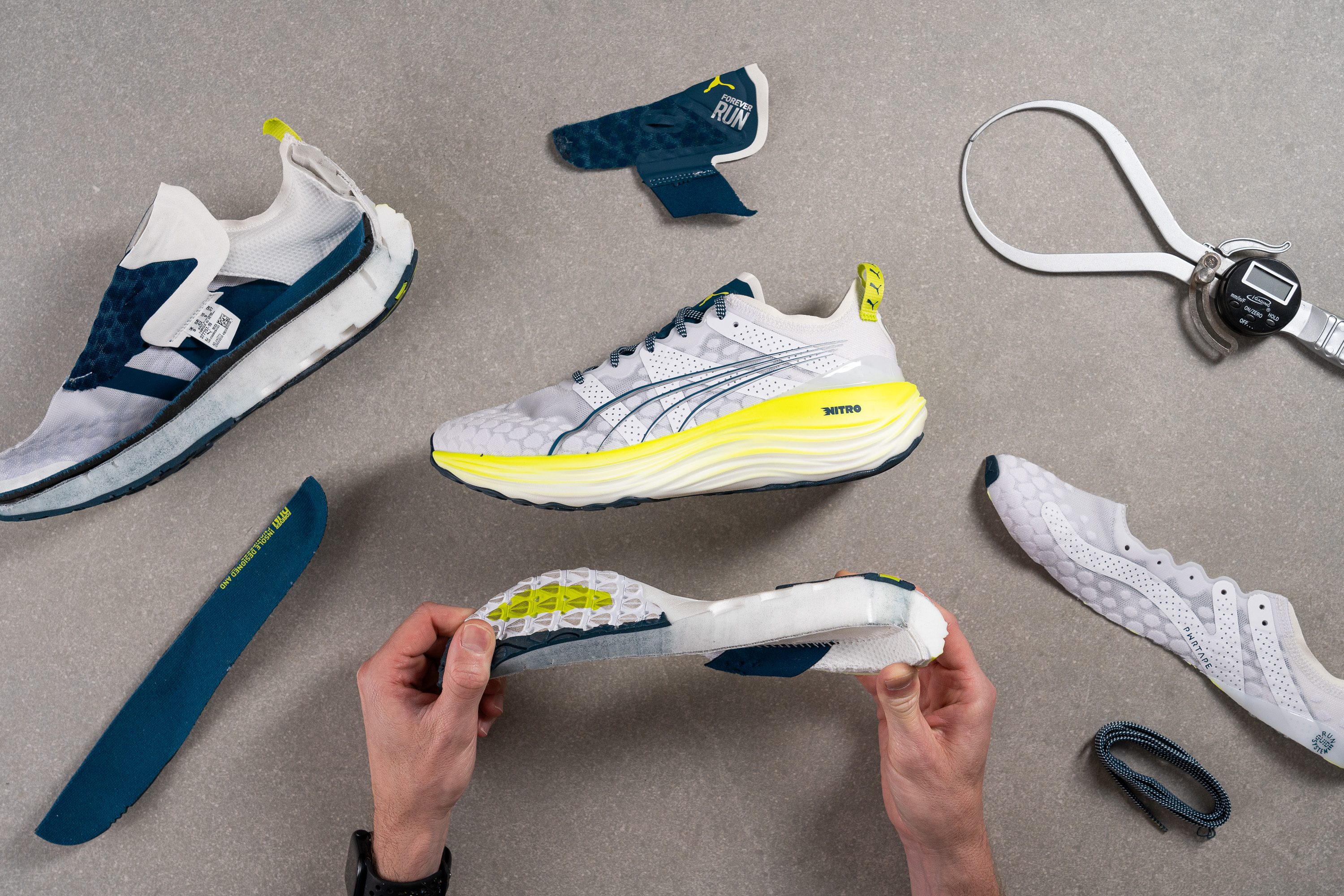
Cushioning
Shock absorption
One of the standout qualities of the ForeverRun Nitro is its all-purpose versatility. With 133 SA in the heel and 108 SA in the forefoot, we found it performs effortlessly during training runs across the board, from easy 5Ks to endurance-boosting long runs.
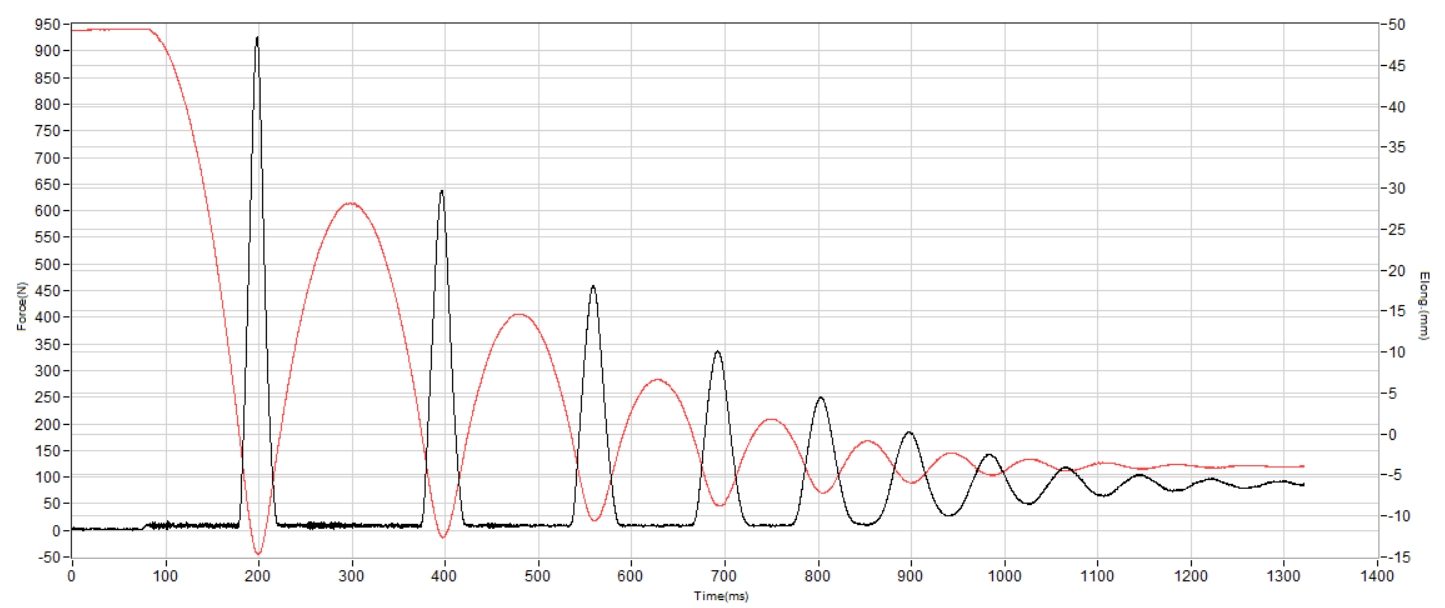
| ForeverRun Nitro | 133 SA |
| Average | 129 SA |
Energy return
Energy return is fine for daily runs, but those chasing top performance will likely find the midsole feels a bit flat at faster paces. We noticed this while testing, and the lab backed it up: 59.8% in the heel and 63.5% in the forefoot aren’t exactly standout figures.
| ForeverRun Nitro | 59.8% |
| Average | 58.5% |
Heel stack
The heel of this shoe, measuring at 36.1 mm with our calipers, offers substantial cushioning but doesn't reach the heights of a true maximalist shoe.
While it may not seem as groundbreaking compared to earlier years or next to giants like the ASICS Superblast 2, the thick heel still ensures that bottoming out seems nearly impossible for every runner.
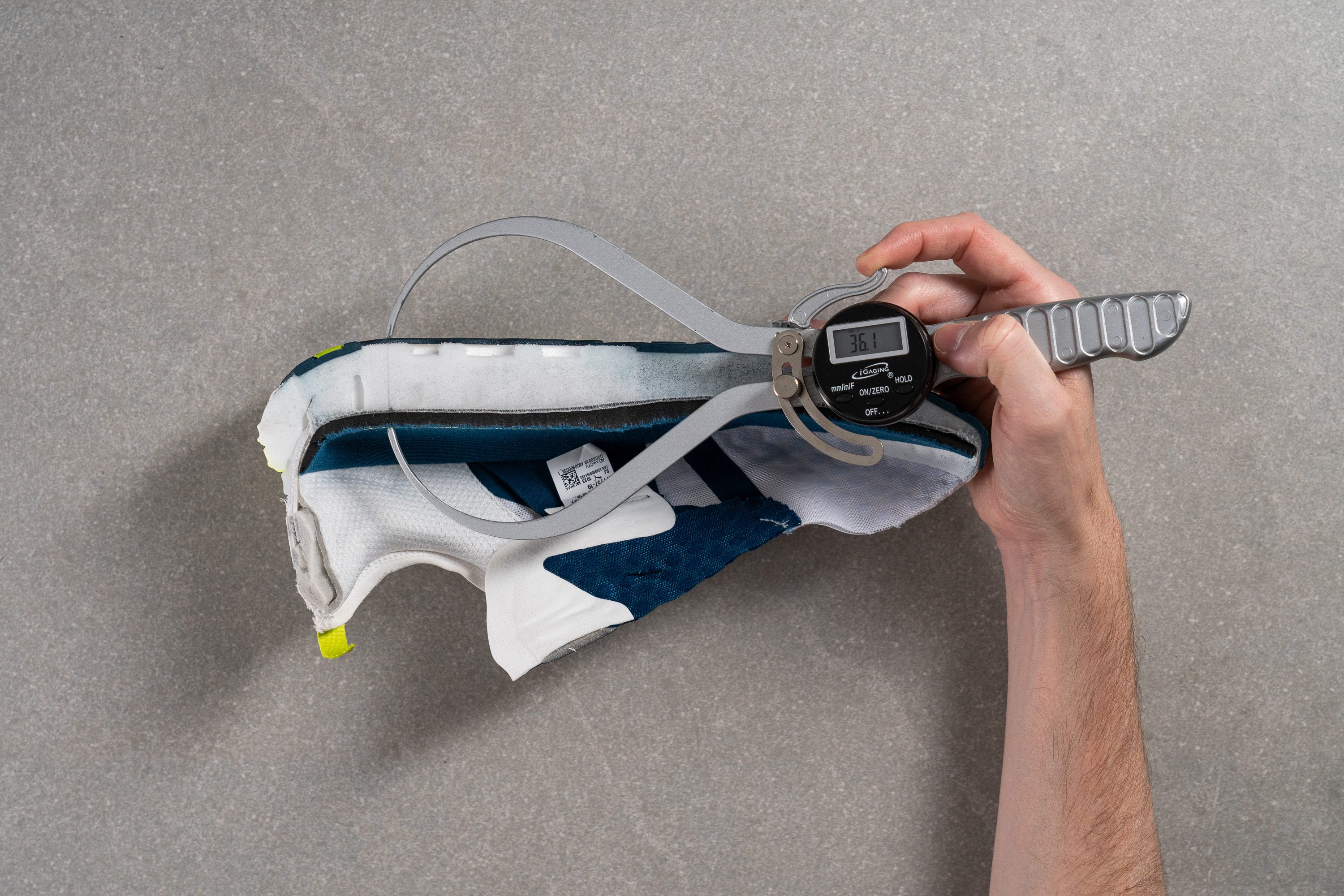
| ForeverRun Nitro | 36.1 mm |
| Average | 34.8 mm |
Forefoot stack
Our measurements revealed a forefoot cushioning of 26.6 mm—ample for most needs too. However, midfoot or forefoot strikers on the heavier side may benefit from the more generously cushioned Saucony Hurricane 24, which offers a thicker forefoot padding for enhanced comfort.
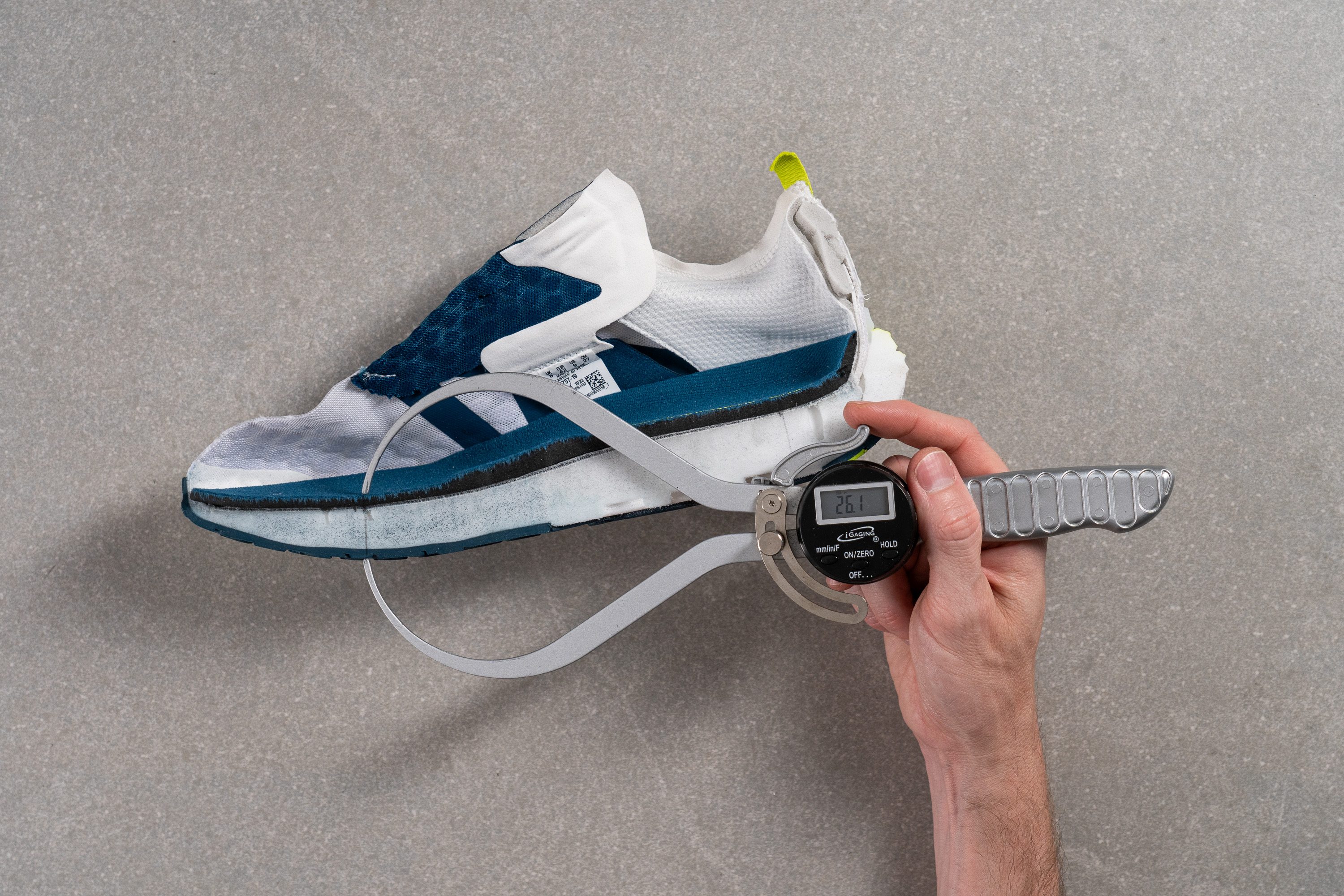
| ForeverRun Nitro | 26.1 mm |
| Average | 26.2 mm |
Drop
PUMA claims that this shoe features a 10-mm offset, and our measurements in the lab confirmed precisely that difference between the heel and the forefoot. This accuracy is a rare instance where the brand hit the mark perfectly!
The 10-mm drop is often viewed as a versatile choice for a daily running shoe, appealing especially to heel strikers, yet versatile enough for various types of runners. And we think it's a good solution for this shoe.
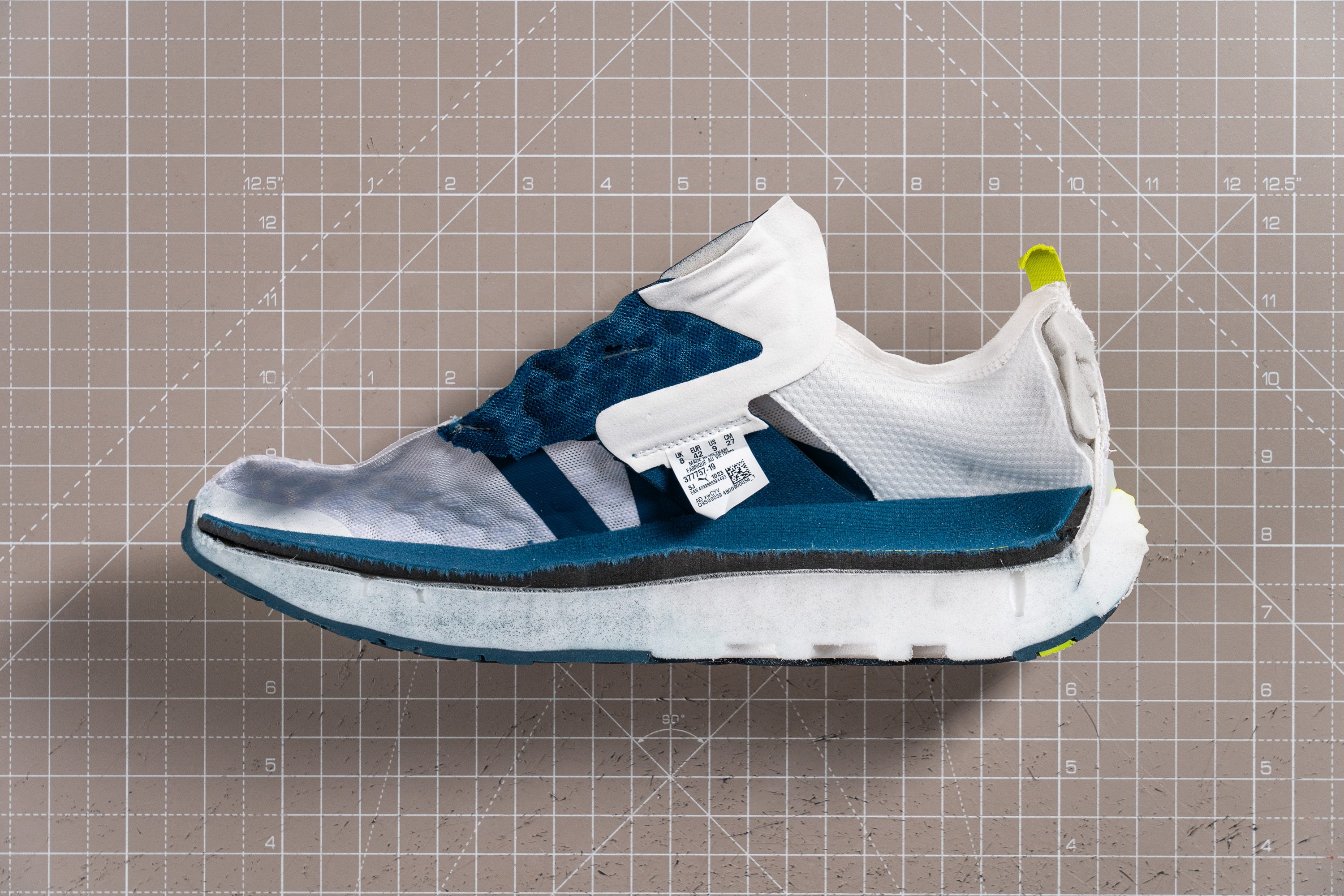
| ForeverRun Nitro | 10.0 mm |
| Average | 8.6 mm |
Midsole softness
One distinct advantage of PUMA training shoes over others is the Nitro midsole, which uses nitrogen-infused foam, typically outperforming most training compounds from other brands.
In the ForeverRun Nitro, we discovered a well-balanced foam that isn’t overly plush, a strategic choice for a shoe designed with stability in mind. While softer foams may be tempting, they could lead to an unstable ride.
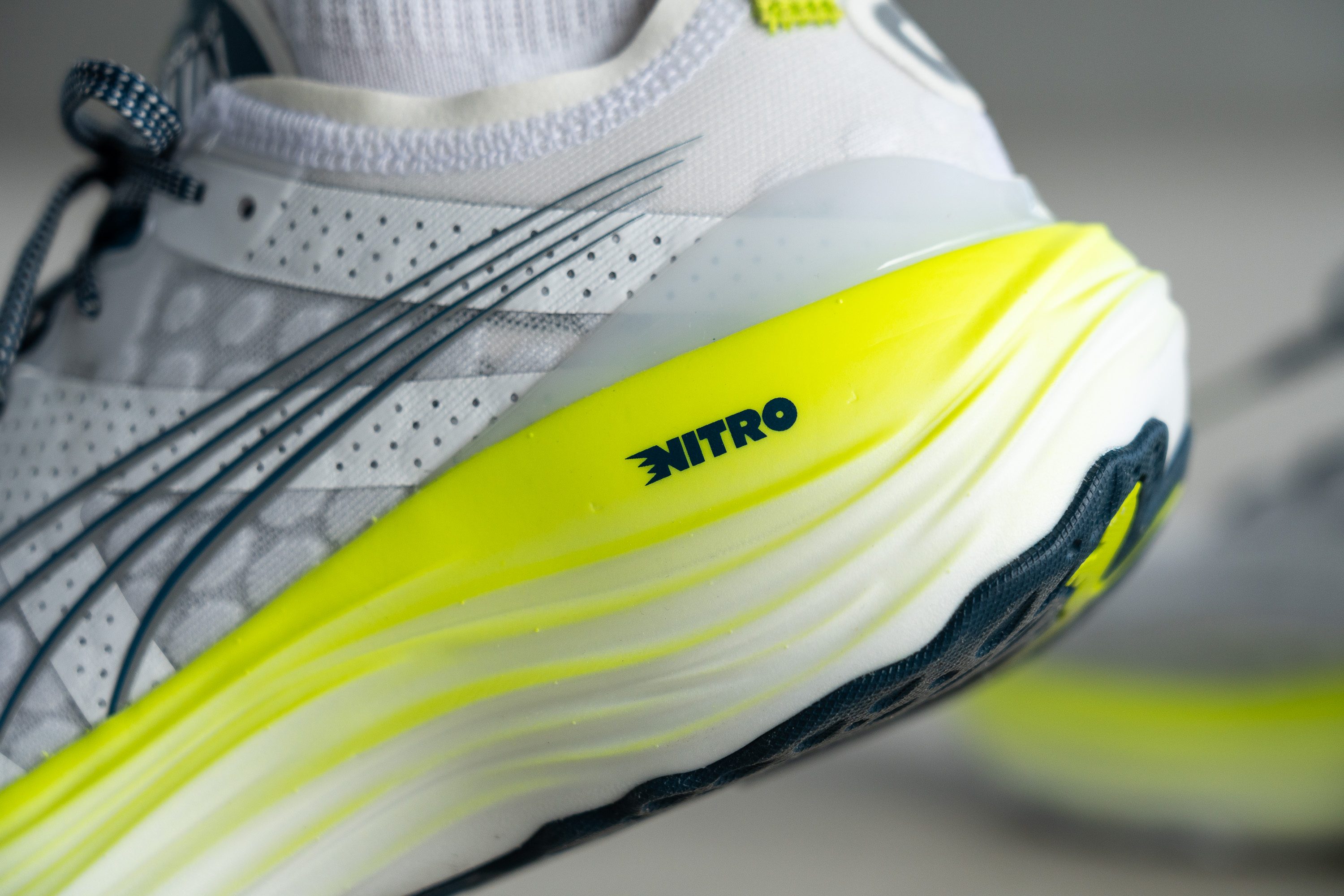
The energy return in this training shoe is great, though not as extraordinary as in other models like the Deviate Nitro Elite 2.
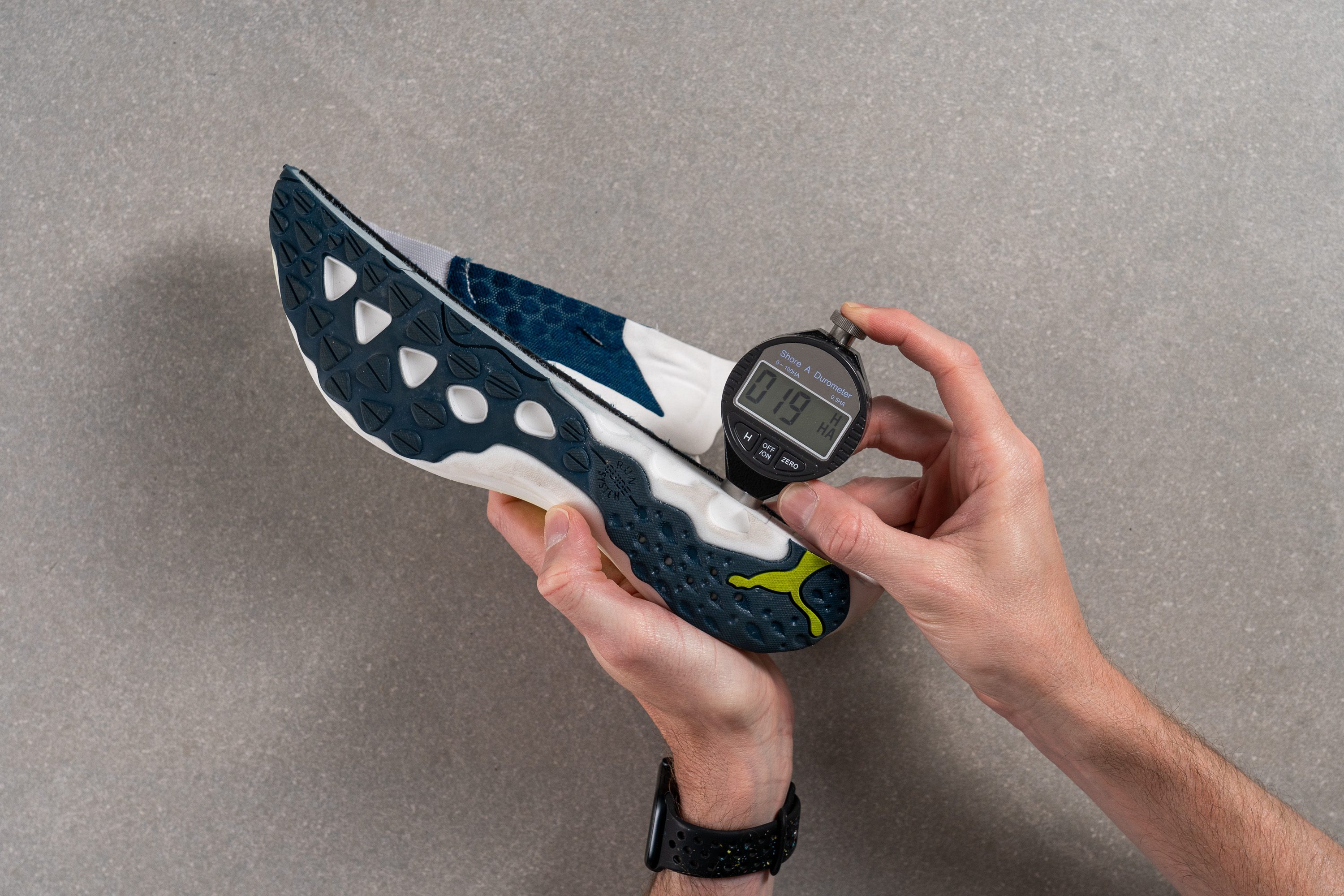
| ForeverRun Nitro | 19.1 HA |
| Average | 20.4 HA |
Size and fit
Size
PUMA ForeverRun Nitro fits true to size (110 votes).
Width / Fit
The fit isn't particularly roomy, but it isn't excessively narrow either.
Our initial measurement at the widest part of the upper showed 97.9 mm—just about average. This felt typical to us during our runs too. However, the shoe’s low-volume upper makes it less suitable for those with larger feet, as demonstrated in the video above.

This test follows an older methodology, which is why you don't see recently tested shoes in the chart. Results from different methodologies can not be compared.
| ForeverRun Nitro | 97.9 mm |
| Average | 98.5 mm |
Toebox width
Our second measurement at the big toe area also showed a standard reading of 77.9 mm, indicating a regularly tapered toebox that should fit most runners comfortably.

Of course, don't expect the spacious, foot-shaped design typical of Altra shoes. It's far away from that.
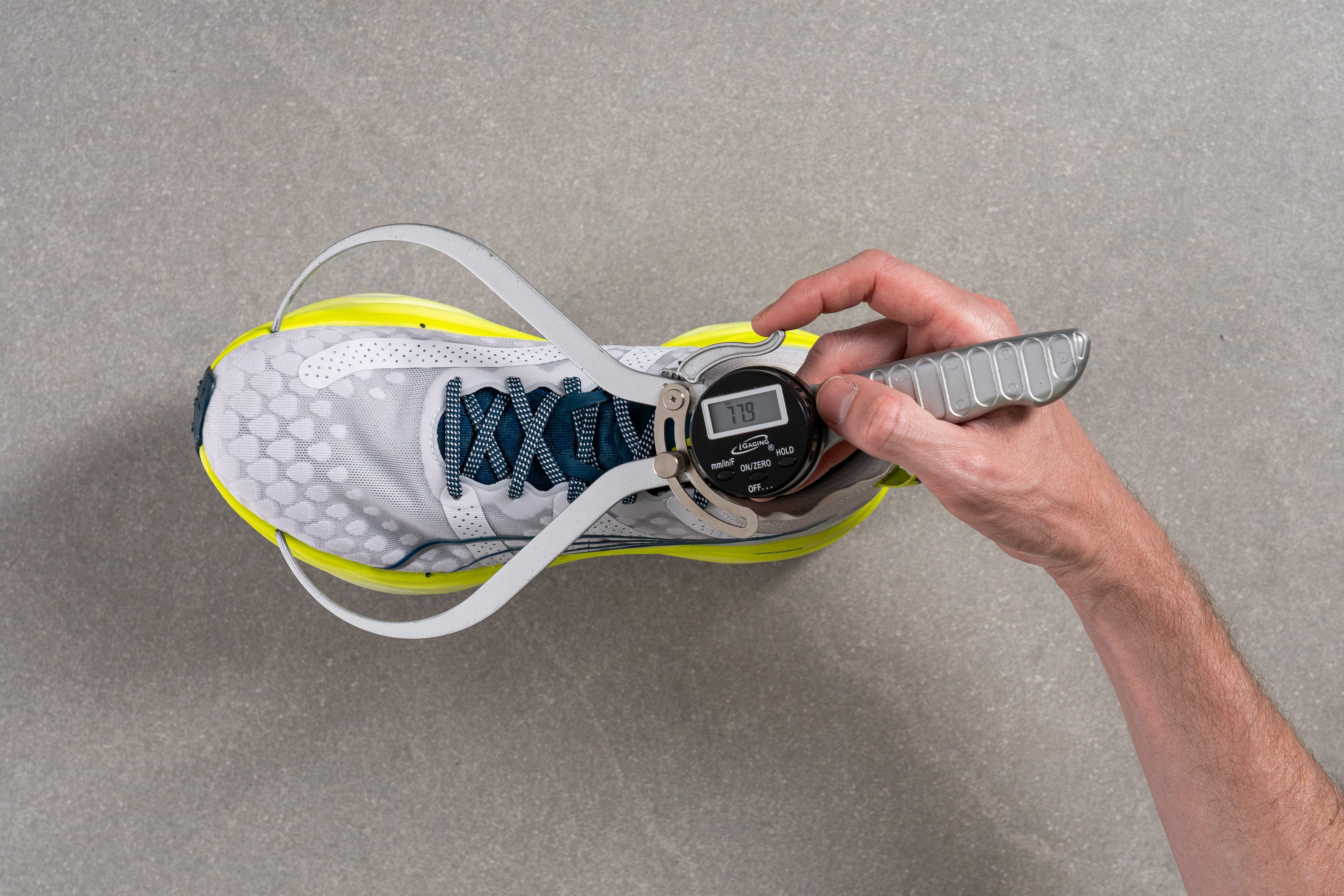
This test follows an older methodology, which is why you don't see recently tested shoes in the chart. Results from different methodologies can not be compared.
| ForeverRun Nitro | 77.9 mm |
| Average | 78.4 mm |
Traction / Grip
Traction test
We tested the ForeverRun Nitro and found it earned an impressive 0.61 in our grip test. That's a high score that confirms excellent grip even in wet conditions. Oh, and this performance is no surprise to us at all, as this shoe features the excellent PumaGrip rubber.
| ForeverRun Nitro | 0.61 |
| Average | 0.48 |
Outsole design
Rubber coverage is good compared to other shoes, though the ample exposed foam on the inner medial side is unusual for a stability shoe.
The outsole design appears to be highly engineered, perhaps to the point of being overly complex. It blends small voids with mini-lugs that seem inspired by a puma's fingerprint and come in various shapes. Additionally, the brand's logo adorns the heel.
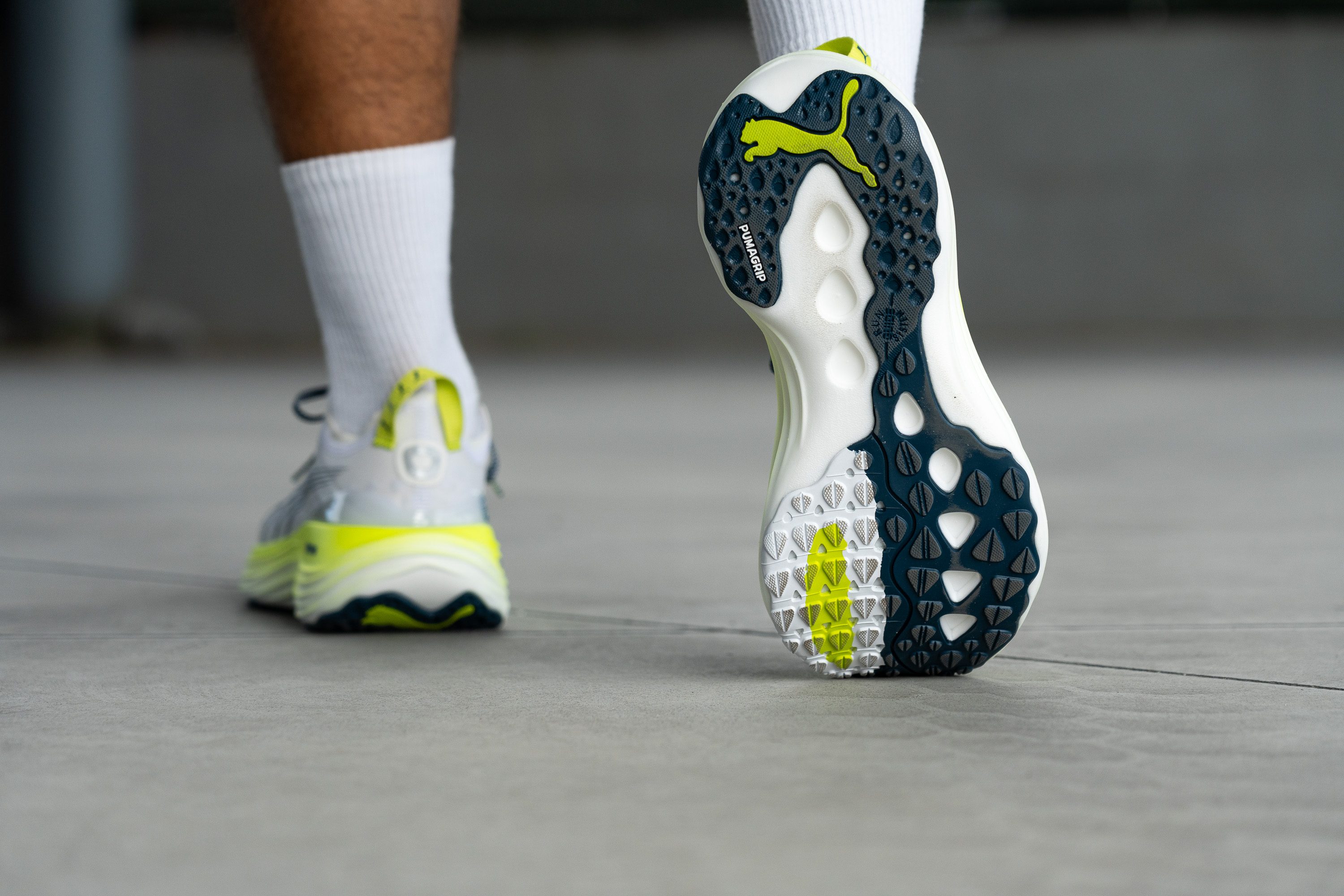
Flexibility / Stiffness
We've noted throughout this review that the ForeverRun Nitro often feels more like a neutral daily trainer than a traditional stability shoe, and our findings from the longitudinal stiffness test support this impression.
The shoe yielded a low stiffness result of 12.8N in our 30-degree bend test, reinforcing its suitability for those seeking a comfortable trainer that also serves well for other activities.
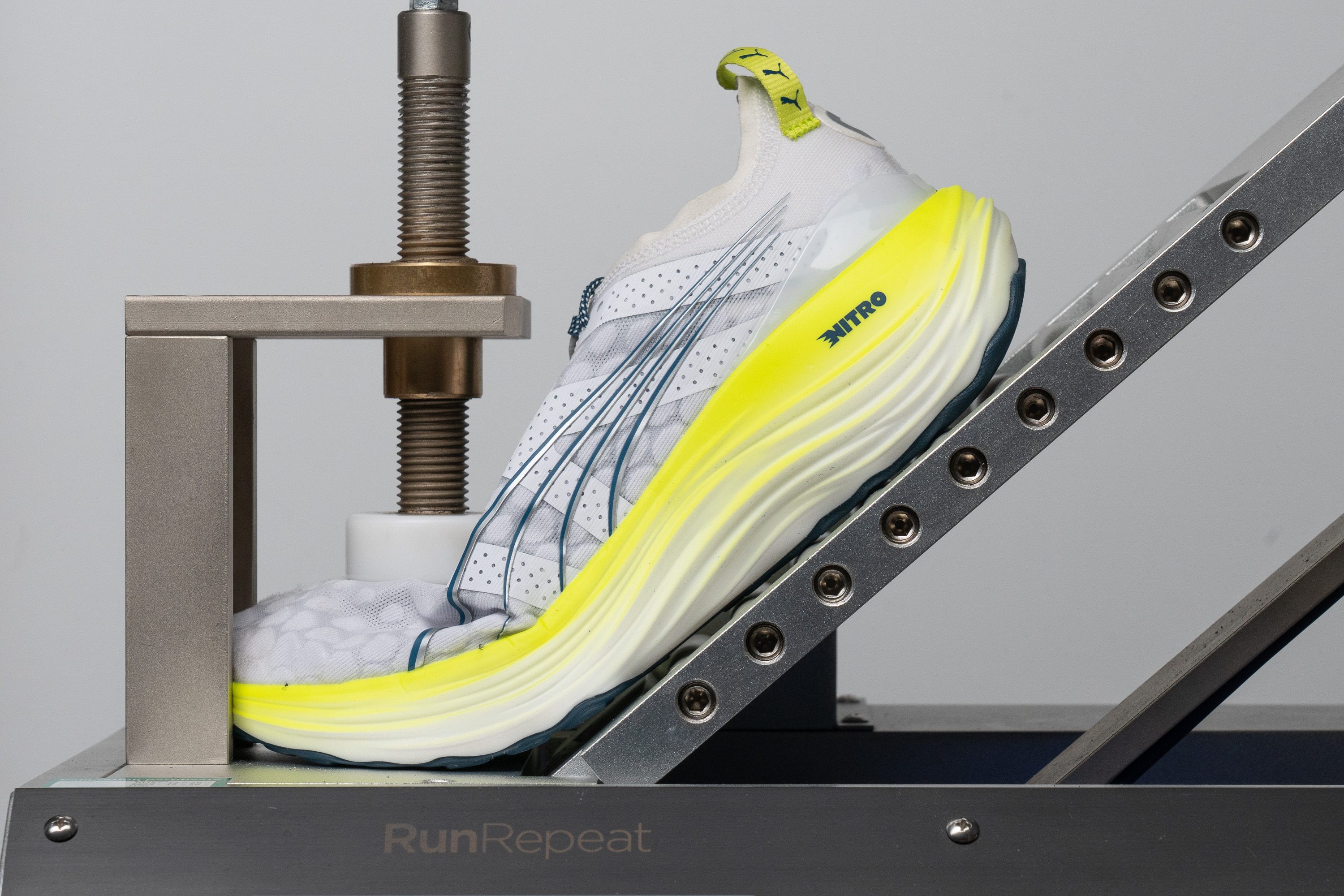
| ForeverRun Nitro | 12.8N |
| Average | 15.3N |
Stiffness in cold (%)
Nitro performed poorly this time in cold temperatures, becoming 39.5% stiffer during our 90-degree bend test. This is a disappointing result for this oam.
| ForeverRun Nitro | 40% |
| Average | 33% |
Weight
The ForeverRun Nitro may look like a very large shoe and initially gives off a heavy-duty impression.
However, once we placed it on our scale and took it for a run, it proved to be surprisingly lighter than it appears. Weighing in at just 9.7 oz or 274g, PUMA has impressively managed to shave significant weight off this model, keeping it below the 10-oz benchmark!
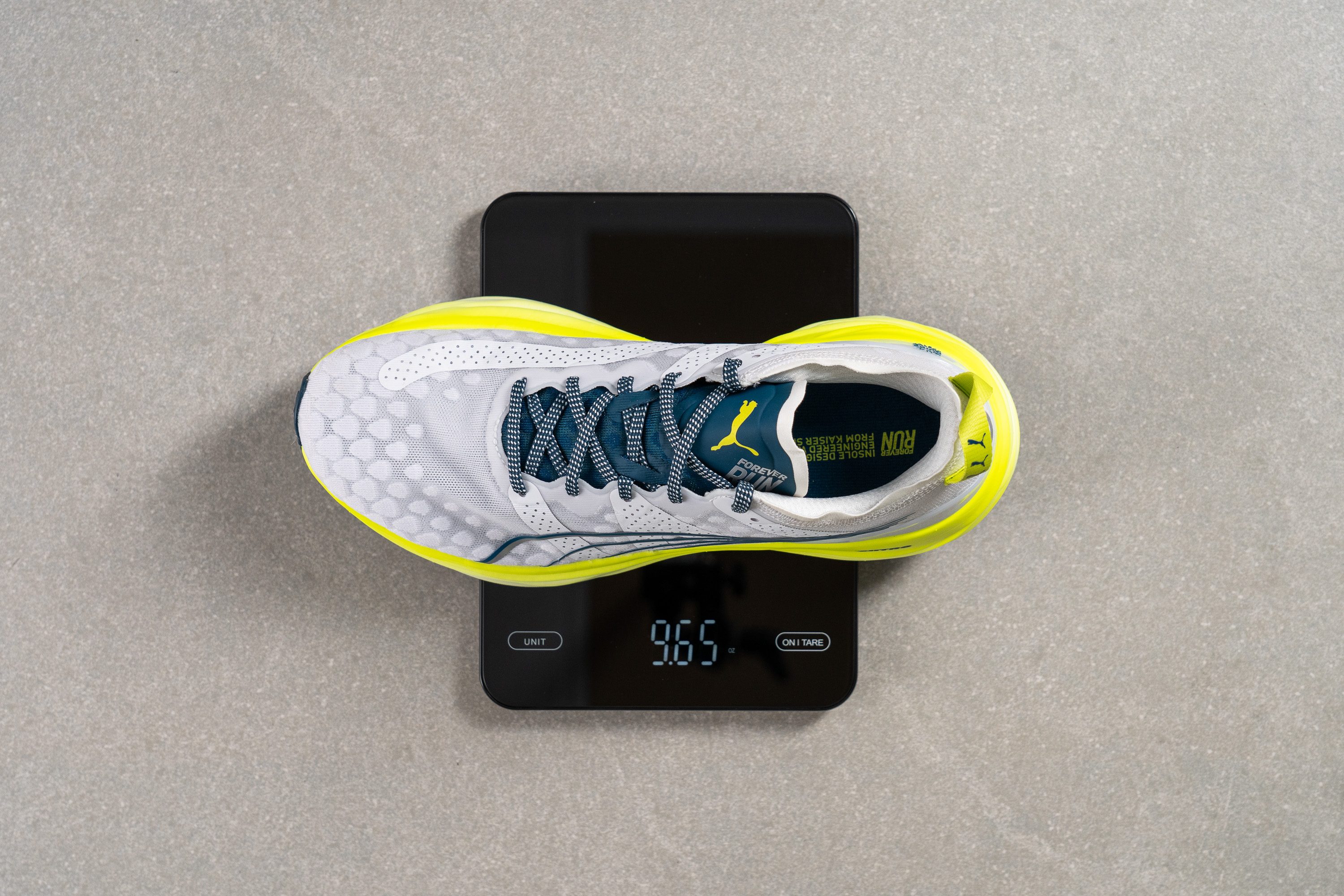
| ForeverRun Nitro | 9.7 oz (274g) |
| Average | 9.3 oz (264g) |
Breathability
One thing we honestly appreciate about PUMA—and this review will highlight this frequently—is their disregard for conventional trends, crafting shoes that truly stand out. The ForeverRun Nitro's mesh upper, with its unique design, exemplifies this approach.
Concerned about how the comfort-oriented, padded minipods in the forefoot might affect breathability, we initiated our testing with the smoke machine. We were pleased to discover a rating of 4/5!
Illuminating the upper revealed the detailed mesh minipods and the supporting PWRTAPE reinforcements more clearly. But rest assured, these features did not hinder heat and moisture evacuation enough.
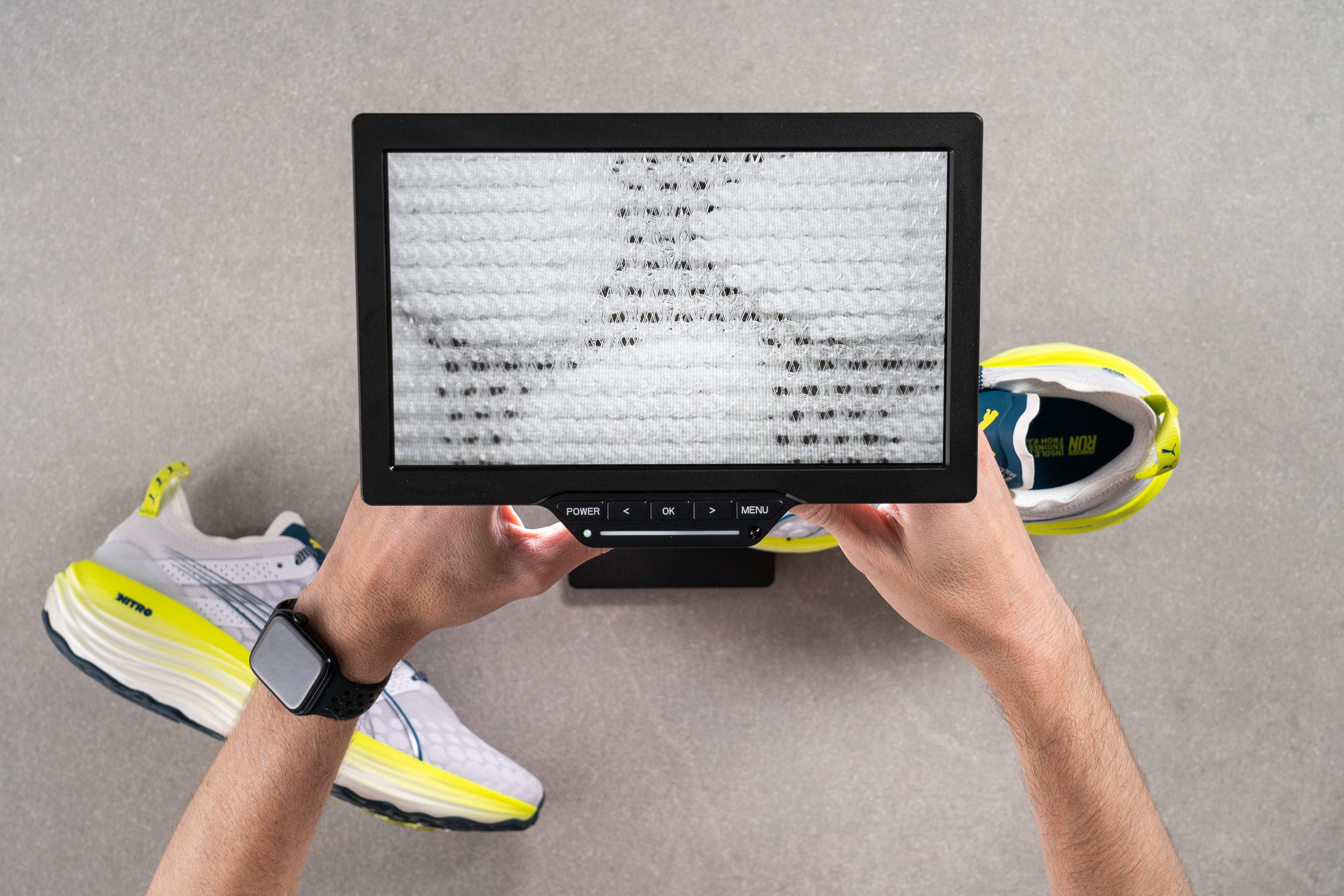
PUMA has cleverly spaced the pods to ensure adequate air circulation, a fact we confirmed under our microscope. It's impressive to witness such precision in manufacturing.
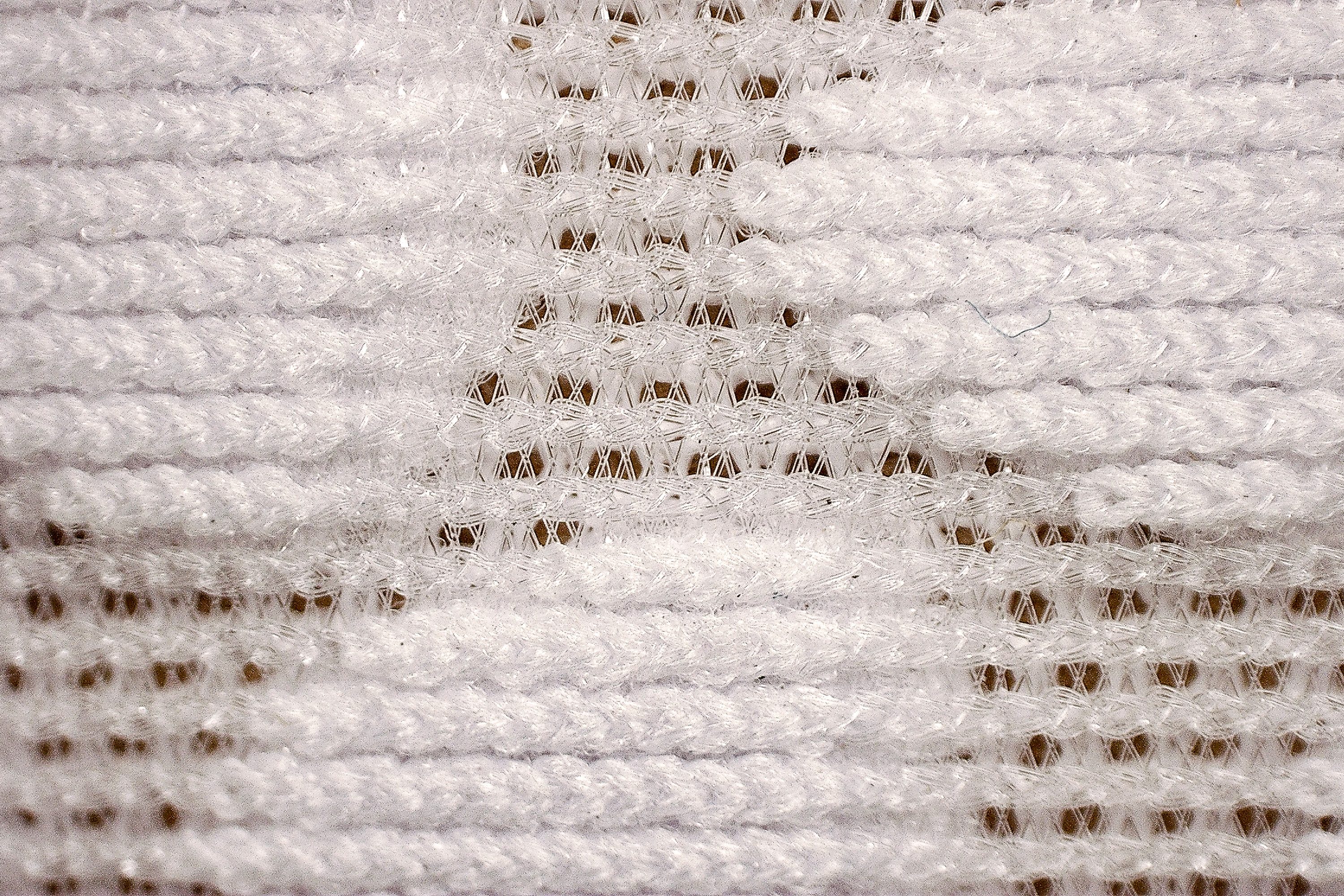
The upper of this PUMA is intentionally crafted without extensive cushioning. This suggests a focus on weight reduction, potentially catering to users who prioritize lightweight, thinner uppers.
Another nice feature of this shoe is the perforated PWRTAPE reinforcements on the upper. These enhancements ensure breathability without sacrificing support, and we absolutely love it.

| ForeverRun Nitro | 4 |
| Average | 3.7 |
Stability
Lateral stability test
The ForeverRun Nitro is marketed as a stability shoe, and we agree—it really hits the mark, checking most boxes for modern, non-intrusive stability trainers and even going a step further.
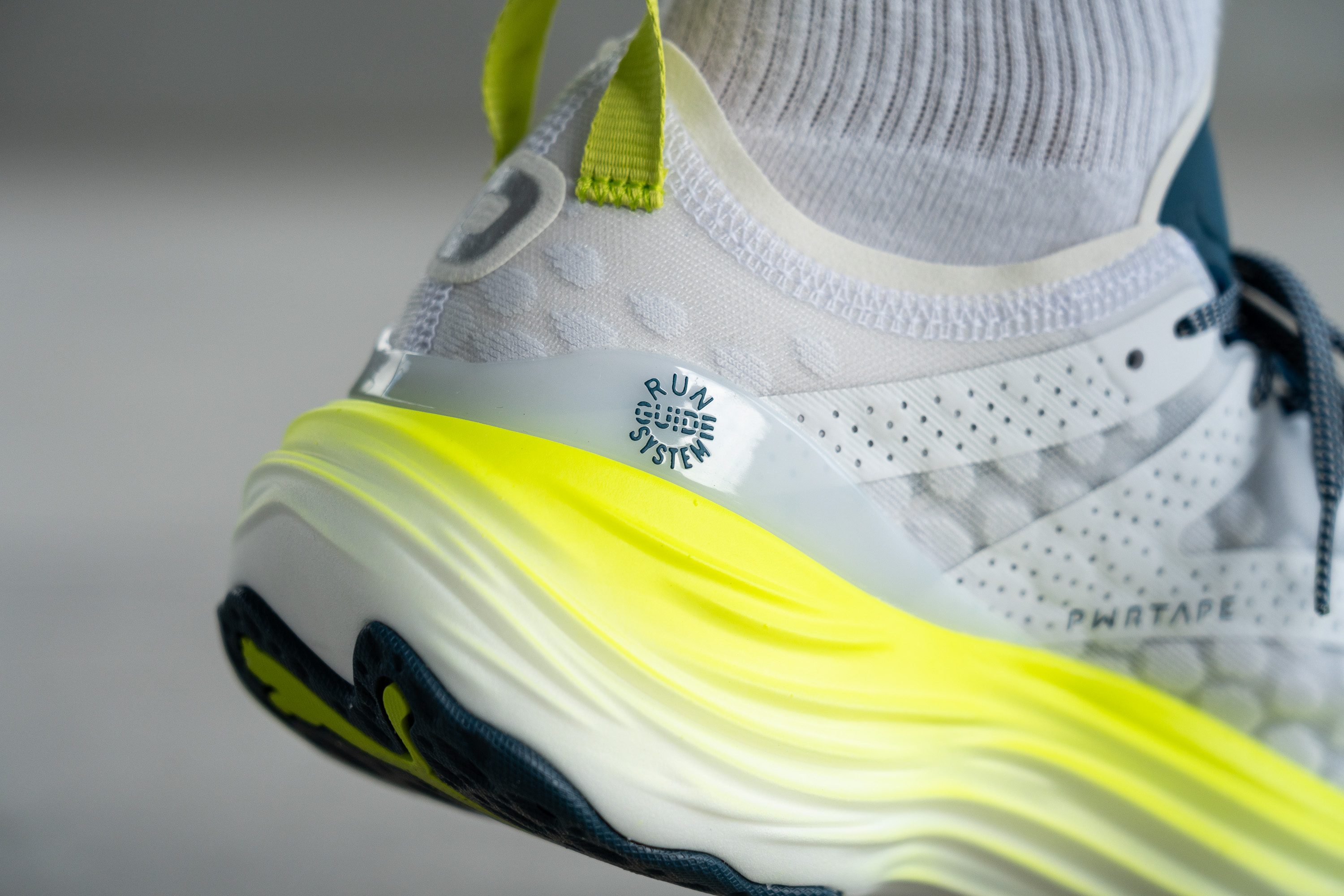
We discovered that PUMA employs what they call the RunGuide System, which is essentially a cool way of saying it's a stable shoe without medial posts or other intrusive elements. They achieve this using techniques like the PWRTAPE reinforcements, a hard plastic heel counter and a massive sole flare, which centers the feet and provides an incredibly wide landing base.
Torsional rigidity
We were surprised to discover that from a torsional standpoint, the ForeverRun Nitro is not very stiff, rating only a 3 out of 5, which is less common in stability shoes. This might explain why it felt to us like a daily trainer in terms of comfort, yet still offered excellent stability.
| ForeverRun Nitro | 3 |
| Average | 3.5 |
Heel counter stiffness
If the previous test surprised us, the second left us truly puzzled. It's quite unusual for us to encounter such a flexible heel counter in a supportive shoe. This 2/5 result clearly indicates that PUMA is intent on doing things differently, diverging from the design approaches of most other brands.
For this reason, this shoe is ideal for runners with sensitive Achilles tendons or those dealing with Haglund's deformity, thanks to its plush and flexible heel area.
| ForeverRun Nitro | 2 |
| Average | 2.9 |
Midsole width - forefoot
The enormous dimensions of the ForeverRun Nitro's midsole stand out, particularly with its forefoot measuring a substantial 121.1 mm.
This result is typical in stability shoes and contributes significantly to the shoe's performance. We observed during our runs that the massive size provided a stable landing pad for us, enhancing confidence with each stride and throughout the transition to toe-off.

| ForeverRun Nitro | 121.3 mm |
| Average | 114.4 mm |
Midsole width - heel
The ForeverRun Nitro sets itself apart from most modern stability shoes because of its narrow midfoot area. Unlike others, like the Hoka Gaviota 5, which maintain a broad shape throughout, the FRN narrows significantly at the midfoot before the heel expands again, reaching a super wide 101.8 mm in the heel area.
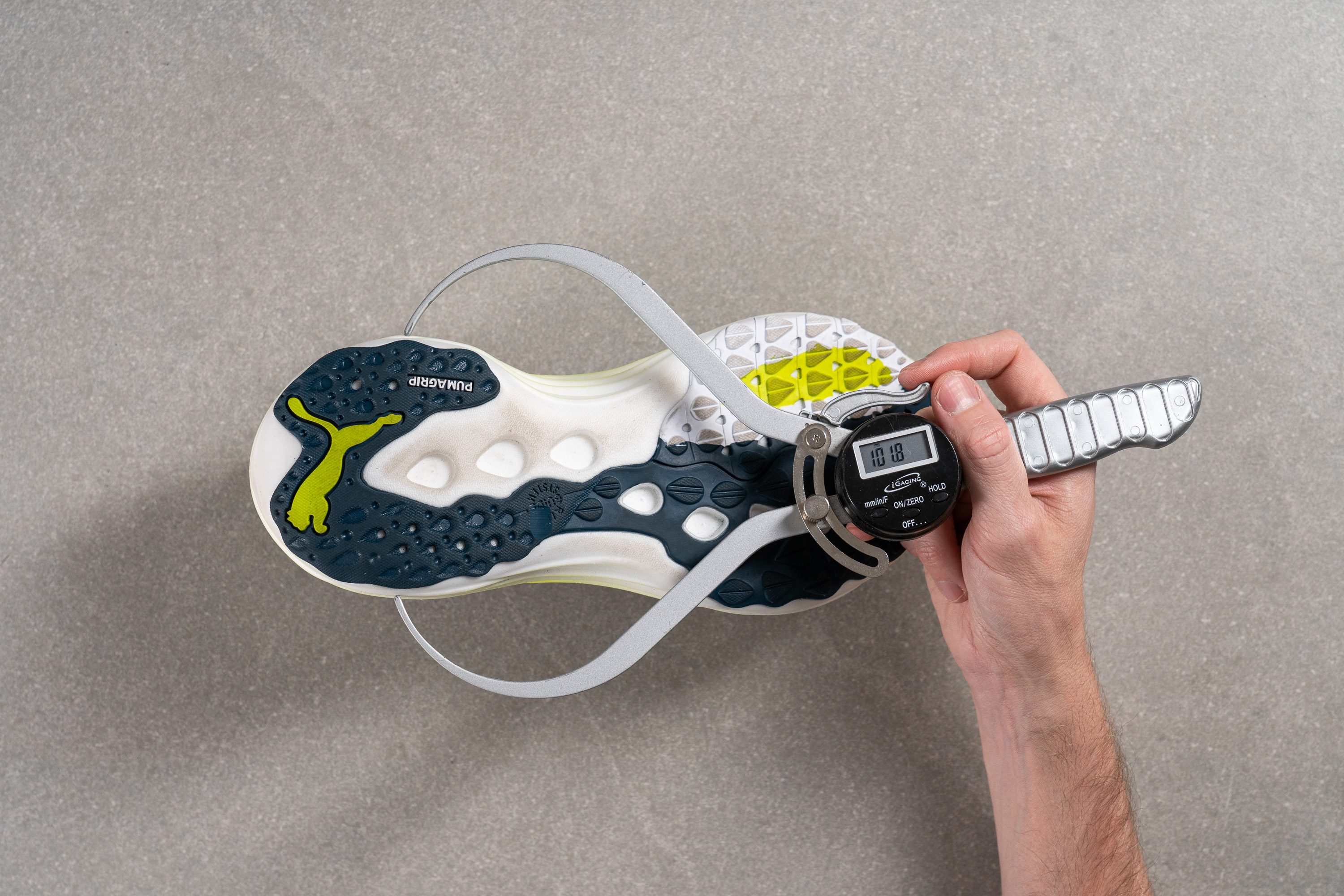
| ForeverRun Nitro | 101.8 mm |
| Average | 90.7 mm |
Durability
Toebox durability
In theory, the tufted pods on the ForeverRun Nitro should also enhance its durability. To test this, we fired up our Dremel, ready to destroy yet another upper here in the lab!
The initial results were quite promising. While a 3/5 may not seem spectacular, it's definitely a positive outcome for any road running shoe. This further confirms that PUMA's unique design not only looks good but will endure over time.

| ForeverRun Nitro | 3 |
| Average | 2.6 |
Heel padding durability
Unfortunately, the heel padding was a disappointment, and we also noticed some minor heel slippage—this could become a significant concern for many runners. We recommend wearing your most cushioned, high-grip socks to mitigate this issue.
We also discovered that the Dremel inflicted more damage than anticipated, leading us to rate it a disappointing 2/5—a score that might raise some eyebrows.
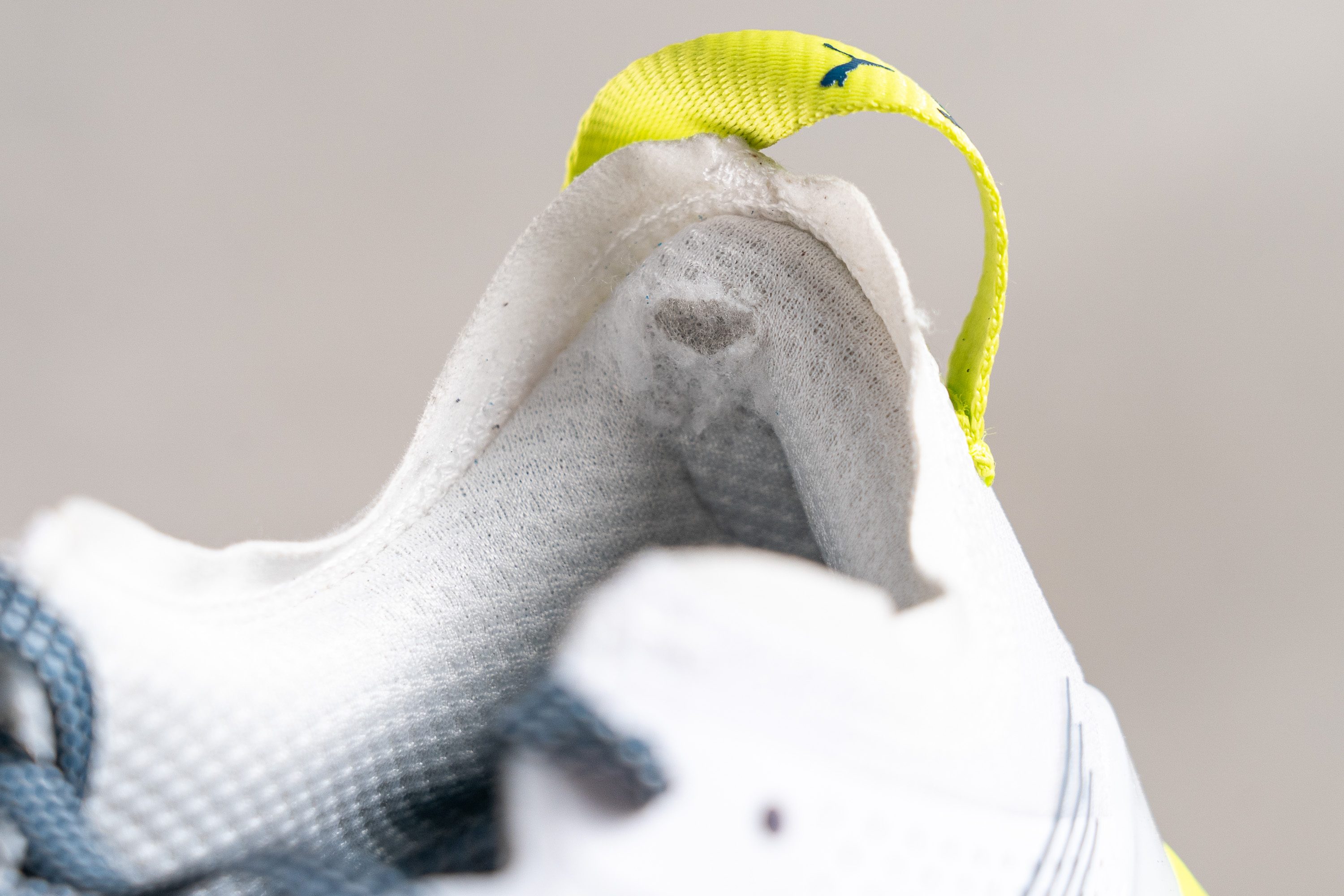
| ForeverRun Nitro | 2 |
| Average | 3.4 |
Outsole durability
While the outsole clings like puma claws, its durability falls short.
In our Dremel test, we observed 1.8 mm of damage—nearly double the average we usually see, which is somewhat disappointing for a PUMAGRIP rubber, albeit expected given its hardness rating.
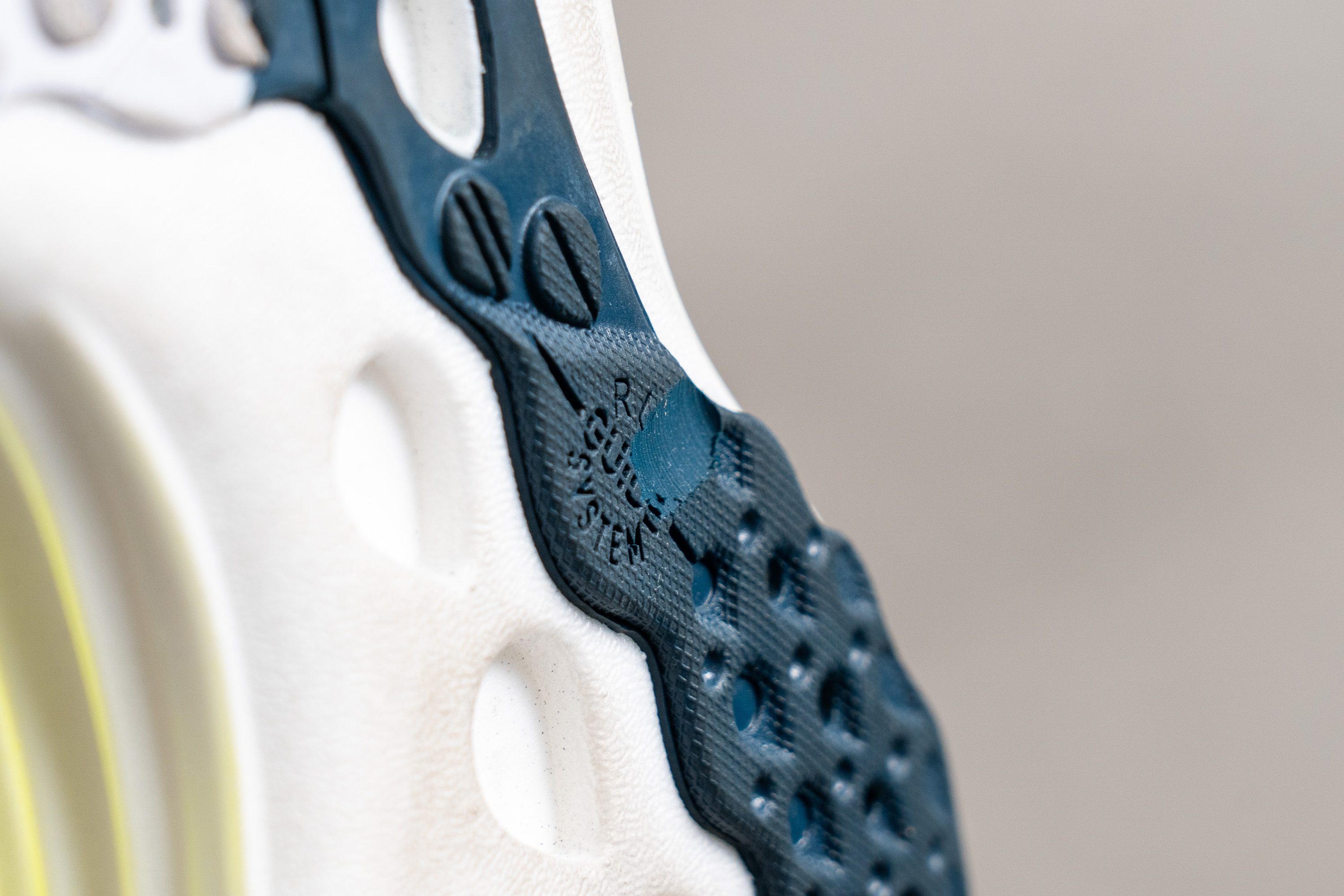
| ForeverRun Nitro | 1.8 mm |
| Average | 1.1 mm |
Outsole thickness
Of course, PUMA was aware of this. That's why they applied a hefty 4.5 mm of rubber instead of the standard three-ish millimeters we typically measure in the lab.
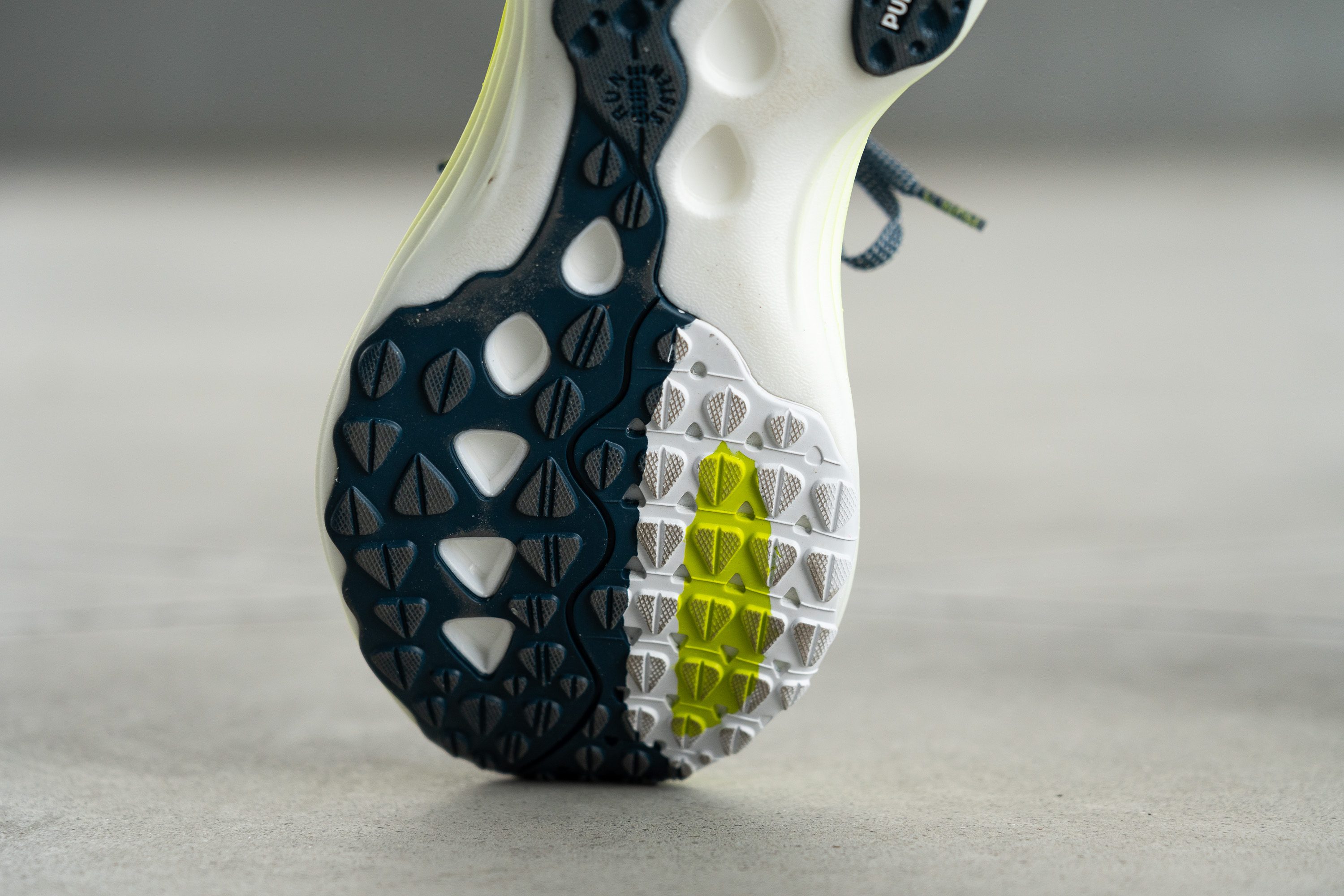
In other words—we proved that they aim to offset the below-average durability with extra-thick rubber, striving to strike a balance between exceptional grip and reduced longevity.
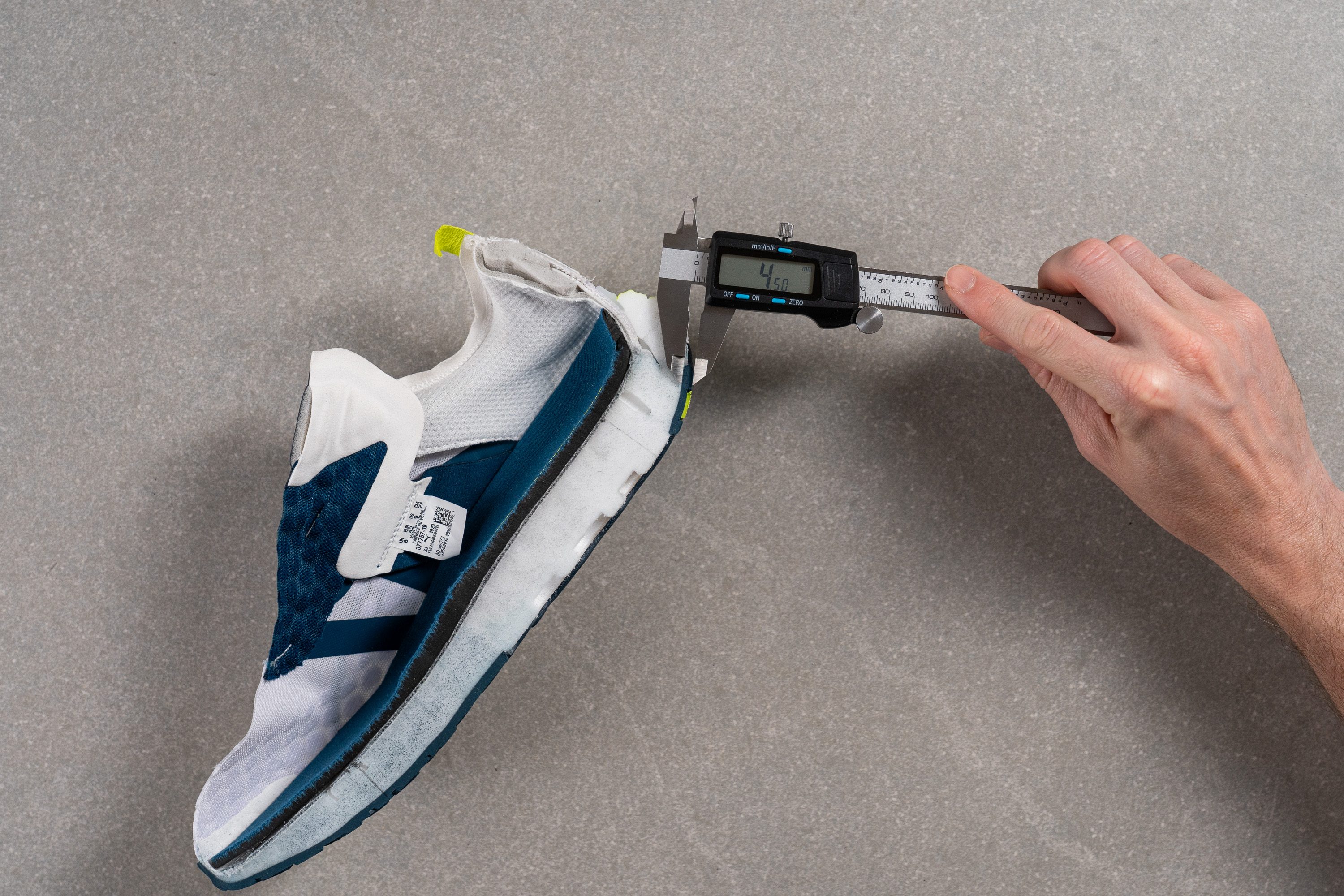
| ForeverRun Nitro | 4.5 mm |
| Average | 3.2 mm |
Misc
Insole thickness
The insole, produced by a Danish company in a rare collaboration—we'll touch on this later—is slightly thicker than usual at 5.3 mm, enhancing the plush feel underfoot.
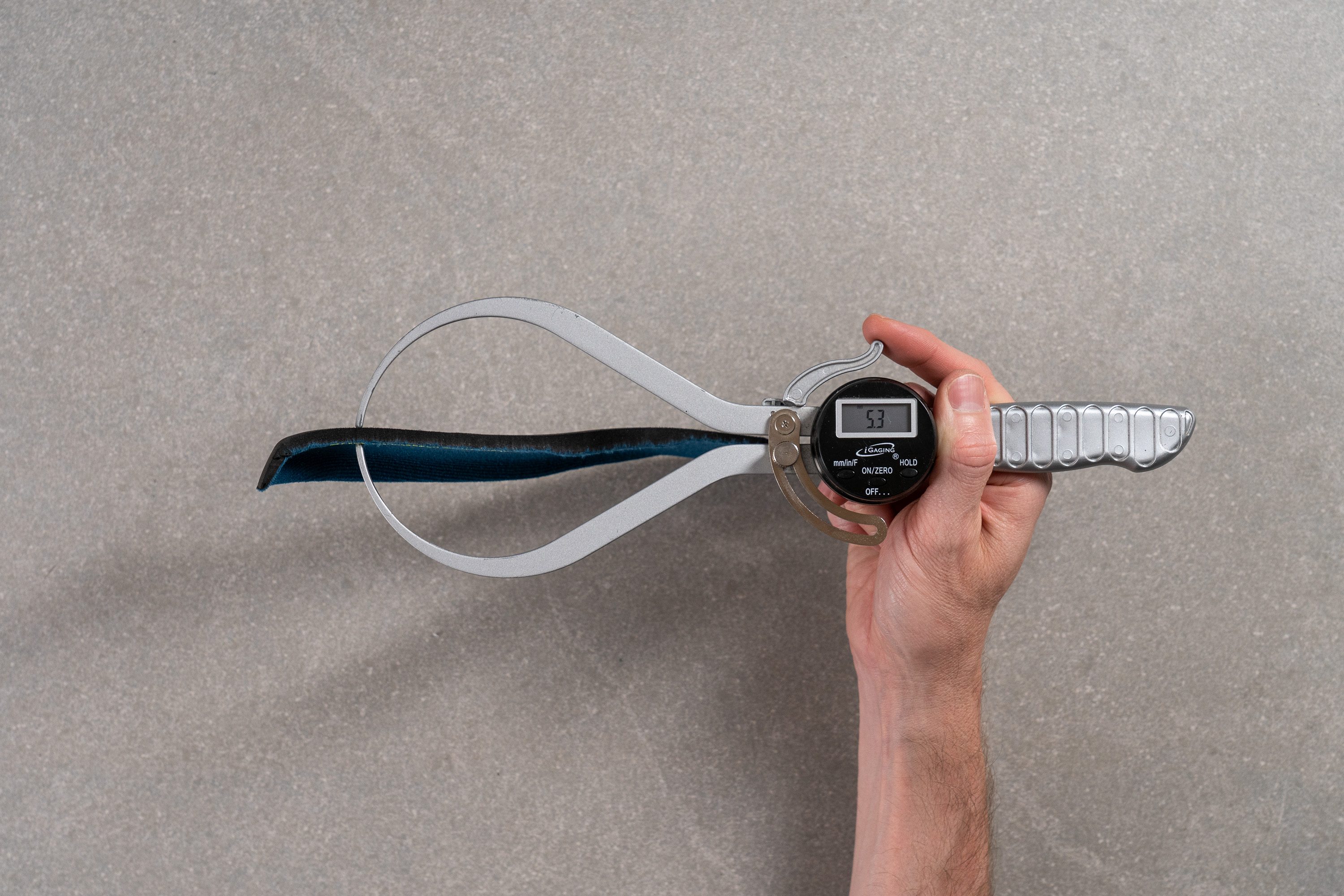
| ForeverRun Nitro | 5.3 mm |
| Average | 4.5 mm |
Removable insole
The insole is not made by PUMA but by the Danish company Kaiser Sport & Ortopædi. Although it's replaceable, doing so means losing one of the shoe’s unique features—the small built-in metatarsal pad.
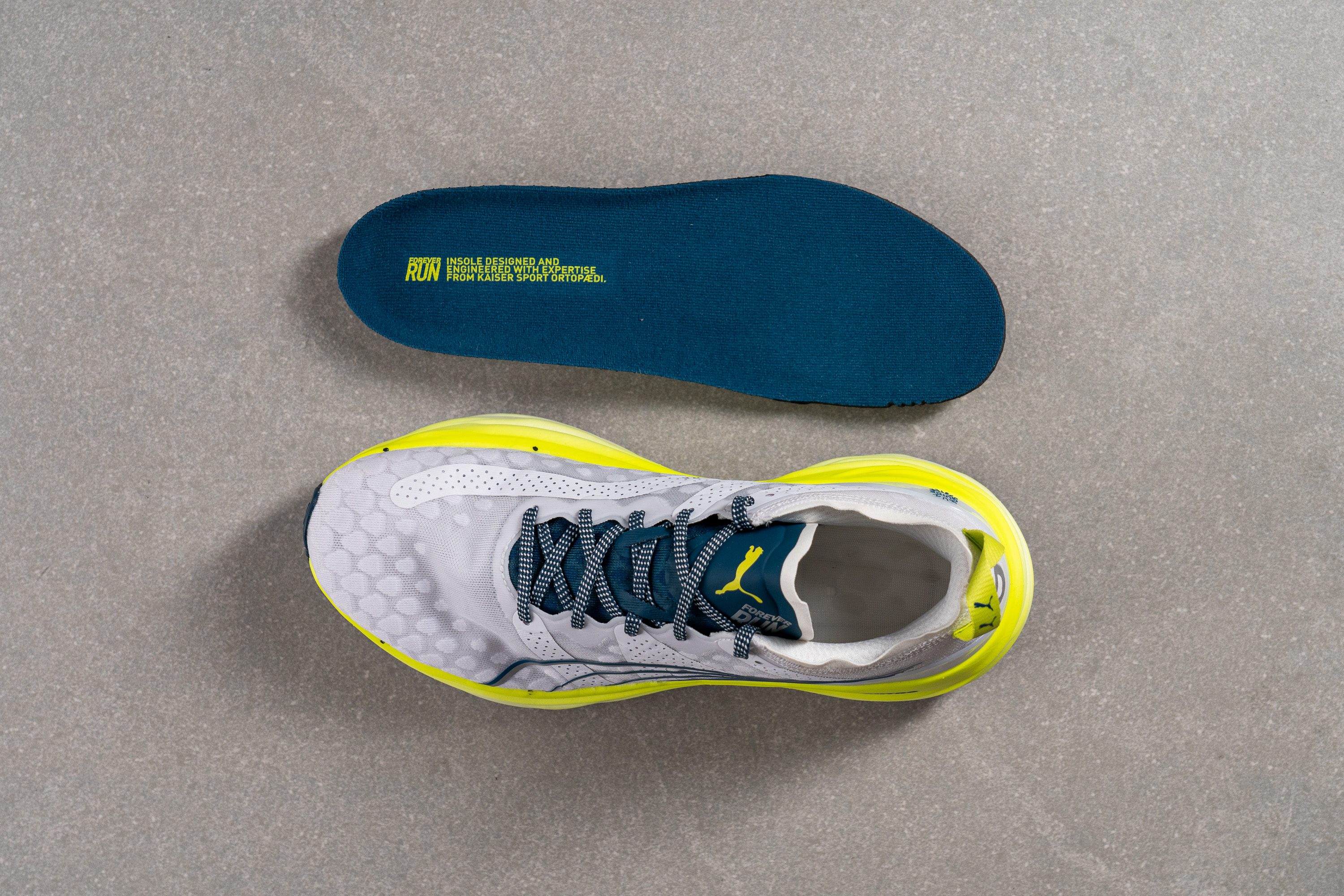
| ForeverRun Nitro | Yes |
Midsole softness in cold (%)
After chilling the ForeverRun Nitro in the freezer for 20 minutes, we tested its softness again with our durometer. The results were quite positive, showing only an 18.9% change!
This was expected because Nitro, unlike plain EVA foam, doesn't lose its softness excessively under cold temperatures.
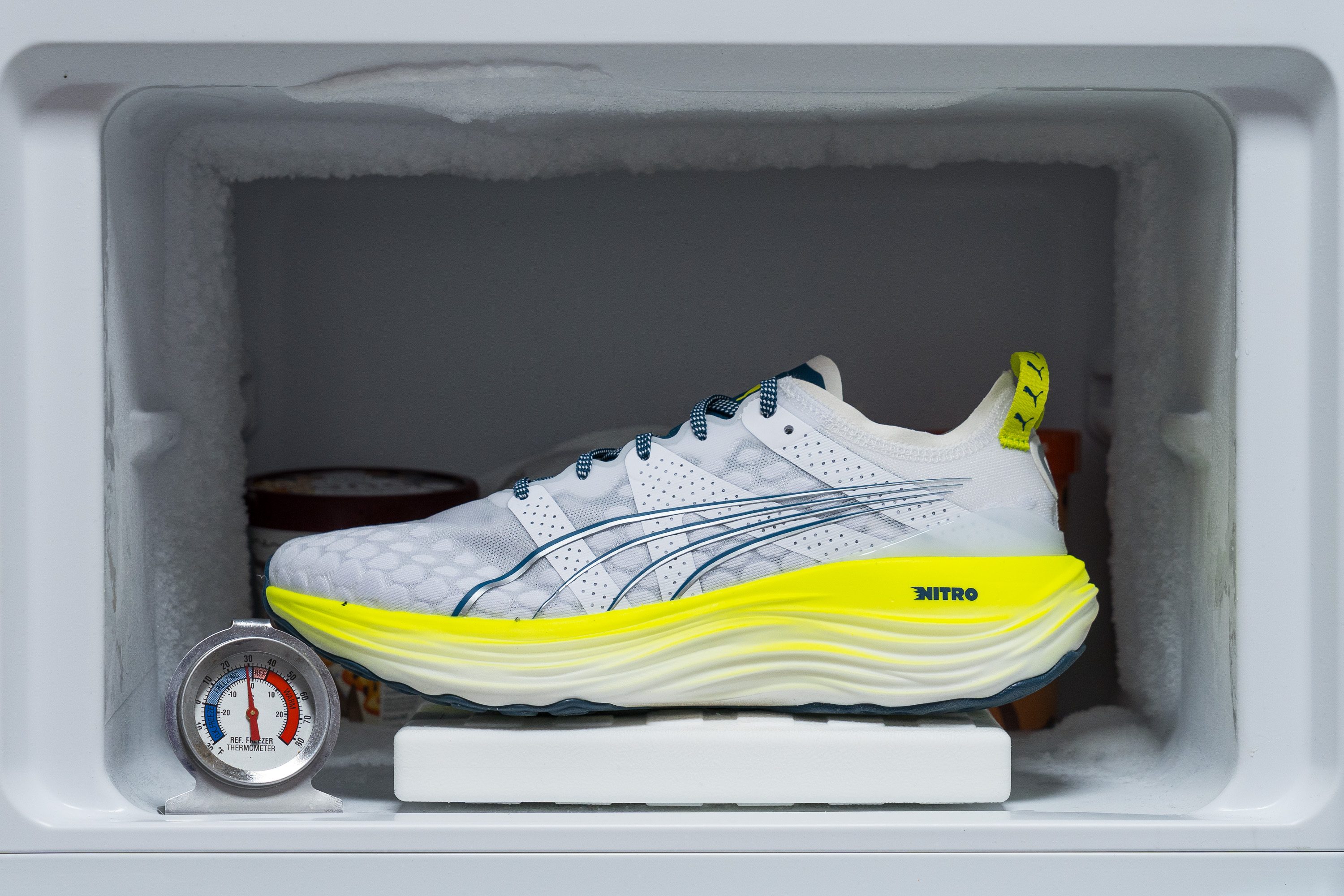
| ForeverRun Nitro | 19% |
| Average | 24% |
Reflective elements
Not many daily trainers feature reflective elements, but we discovered that the ForeverRun Nitro includes a few. They aren't the most eye-catching we've tested, yet they still provide some added safety for you.
| ForeverRun Nitro | Yes |
Tongue padding
The tongue in this shoe strikes a perfect balance between comfort and weight. PUMA took a clever approach, as they added just a 5.3 mm pad to protect the instep, while keeping the rest of the tongue thin and streamlined, which significantly cuts down on weight.
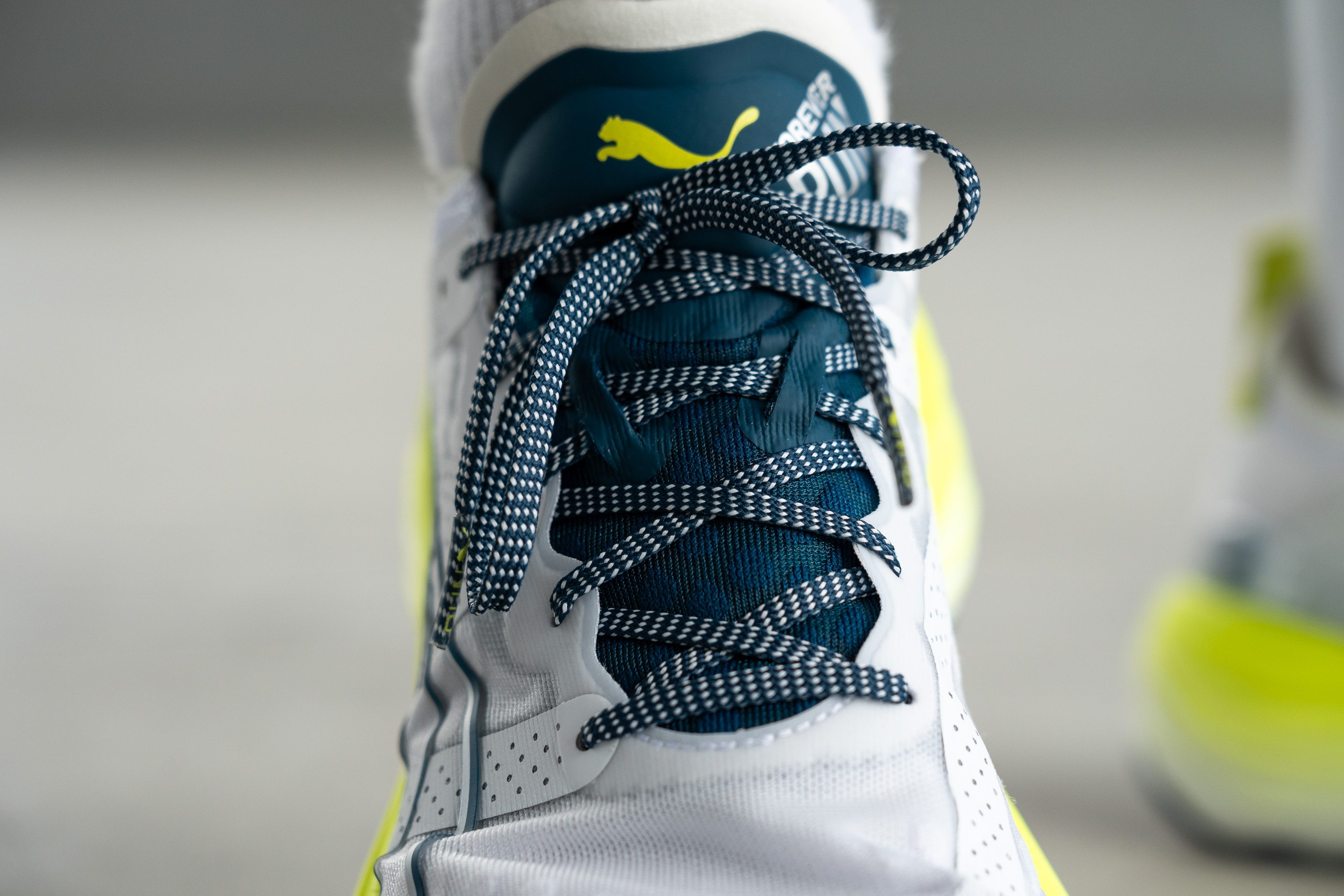
This design doesn't offer the plush comfort of pillow-like tongues, but it's a trade-off that pays off by saving weight and still providing sufficient protection. We think it's a smart choice if you're looking for a more dynamic shoe.
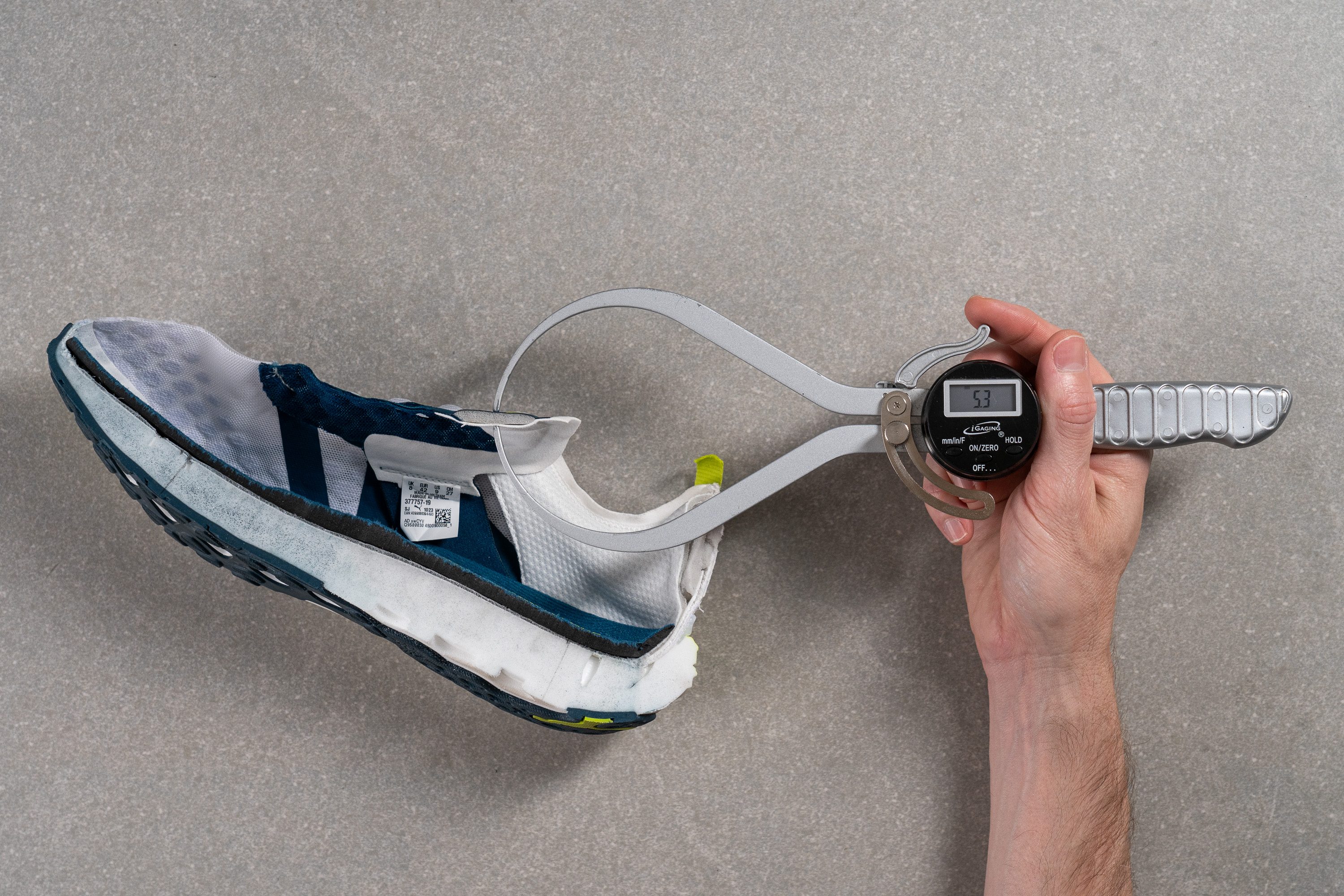
| ForeverRun Nitro | 5.3 mm |
| Average | 5.8 mm |
Tongue: gusset type
The tongue is semi-gusseted, meaning it's partially attached to the sides—our preferred setup for daily trainers. We're happy to see that PUMA didn't skimp on quality here, especially since it's common for some brands to cut corners on this often-overlooked feature to save a few cents per shoe.
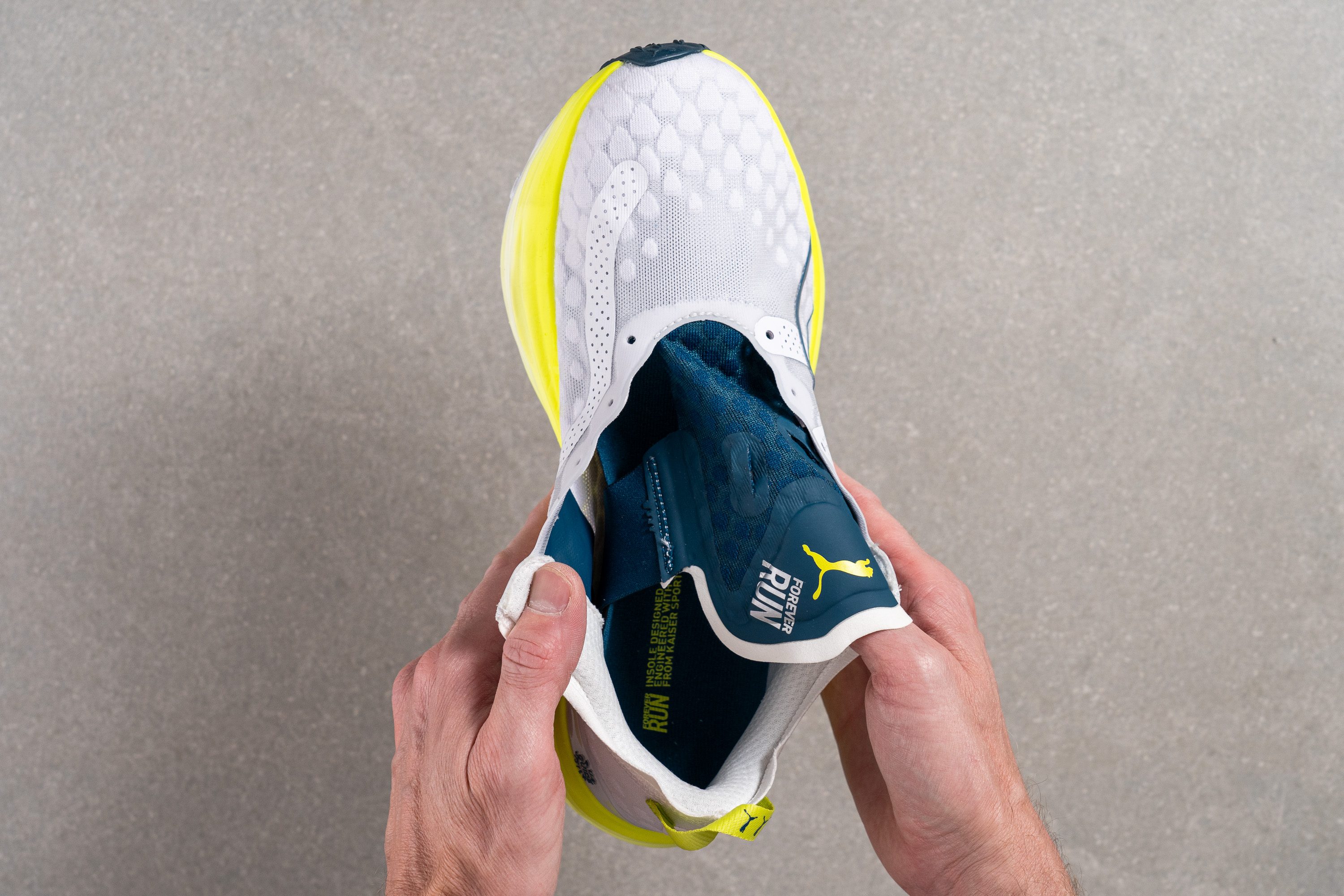
| ForeverRun Nitro | Both sides (semi) |
Price
We believe the ForeverRun Nitro is reasonably priced—while it's not an outstanding bargain, it certainly holds value. For a well-cushioned stability trainer with superior build quality and good quality materials, we feel that we certainly can't voice any complaints to PUMA at all.
| ForeverRun Nitro | $150 |
| Average | $152 |
Heel tab
The ForeverRun Nitro features a horizontal finger-loop heel tab, which we didn't particularly like. It seems overly large and not built to last. However, it does provide a handy grip—just be gentle when pulling on it.
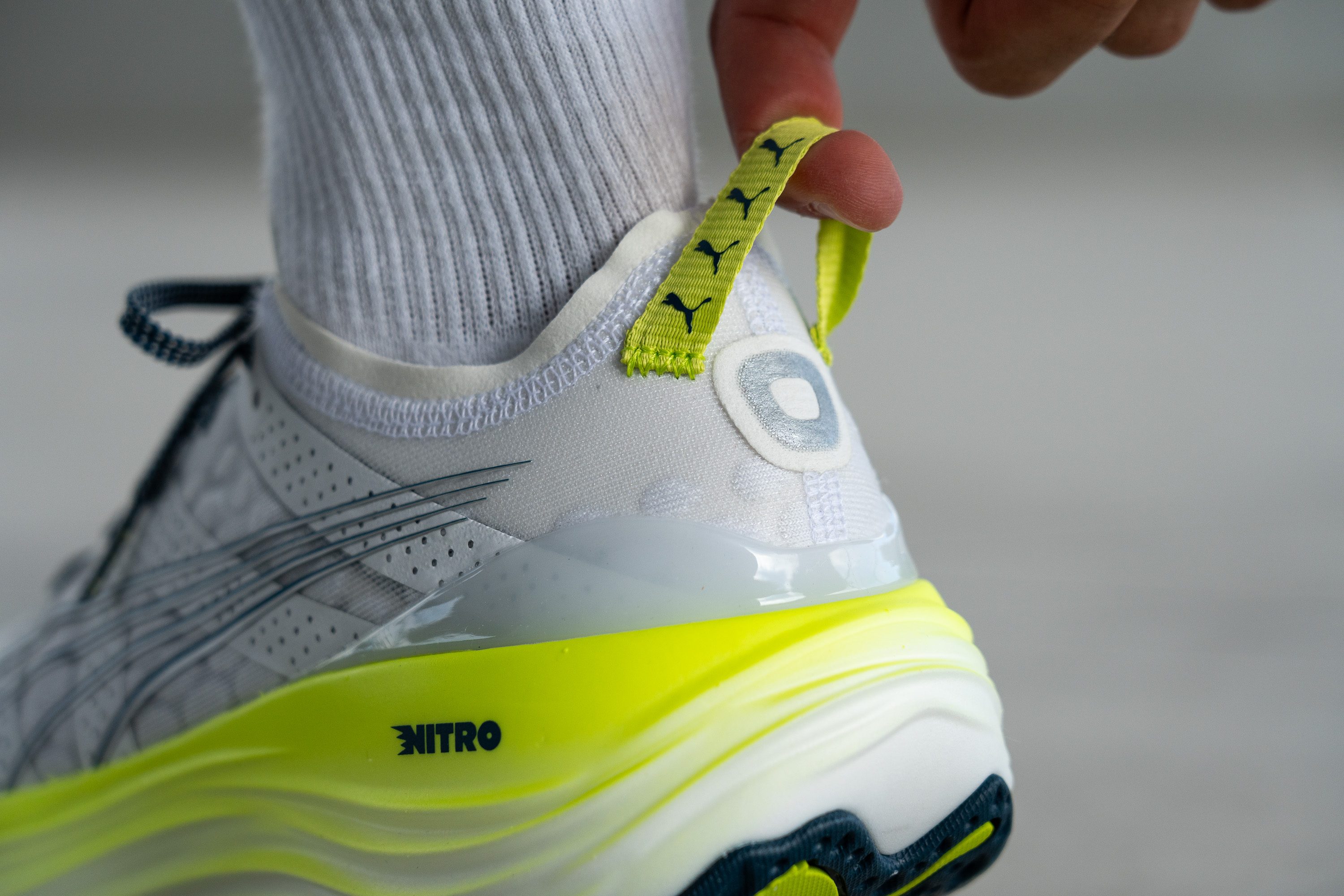
| ForeverRun Nitro | Finger loop |
























































